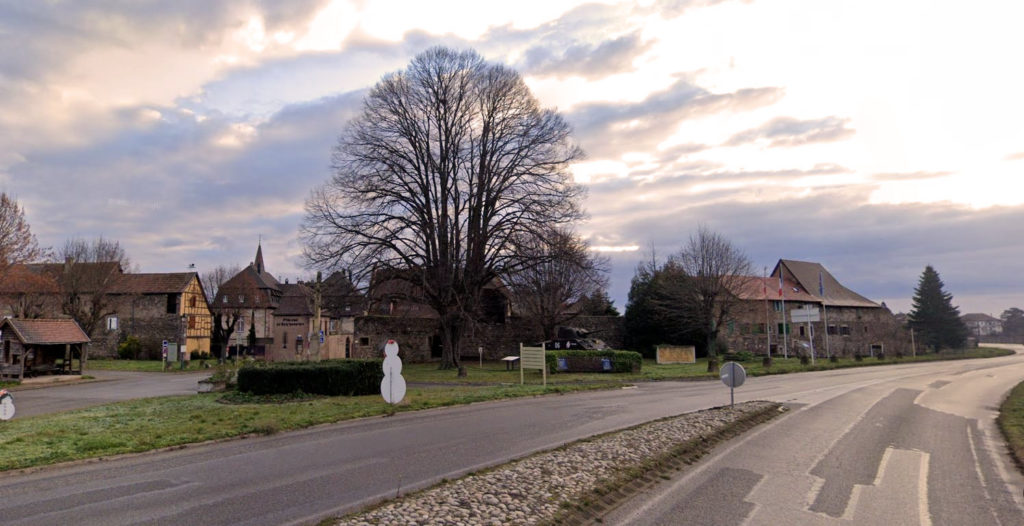Flammenwerfer 41- FmW 41.
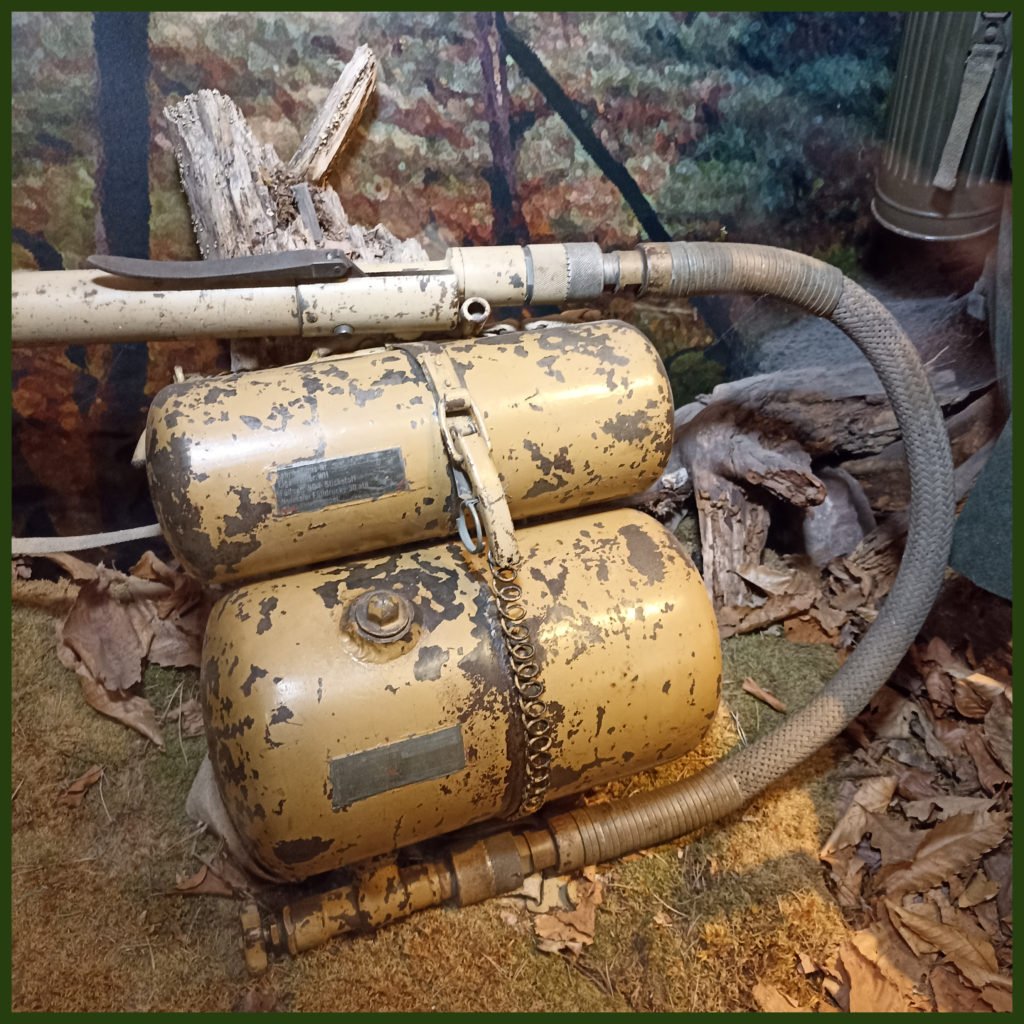
German flamethrower, model “Flammenwerfer 41”, put into service in 1941 and used until the end of the Second World War.
Its main use was “cleaning” trenches, blockhouses, heavily fortified buildings and positions.
It weighs around 29Kgs (63 lbs) and contains “Flammöl 19”.
Approximately 12 liters (3.1 gal) of petrol and tar mixture (“Flammöl 19”) were stored in one of the 2 back containers.
The second container held the propellant needed to project the flames.
Flames can be projected up to thirty meters.
Flames can be projected for up to 10 seconds.
From 1942 to 1945, 64,284 units were produced.
J-FEDER 504 & his transport box.
It was with a J-FEDER 504 time-delay igniter and a large quantity of explosives that the Germans booby-trapped the LACARRE barracks before their hasty departure from Colmar on February 2, 1945, where the paratroopers of the 1er RCP would settle after their departure.
On February 11, 1945, while the majority of officers, non-commissioned officers and chasseurs were celebrating the Liberation of Colmar in town, at 11 p.m. this (undiscovered) time bomb suddenly exploded.
A large part of the central building was destroyed… 5 dead and 10 wounded were found in the rubble.
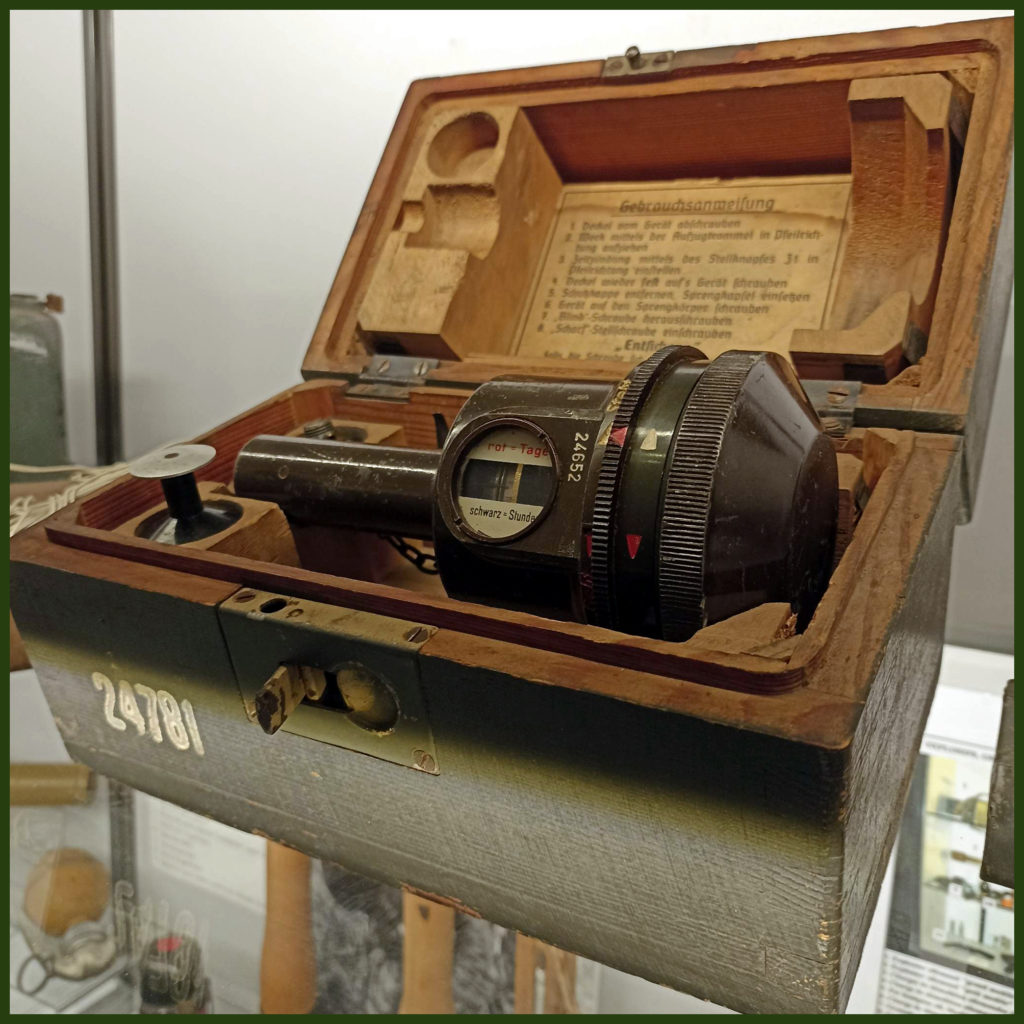
In front of you is a wooden box with a J-FEDER 504 time-delay igniter.
Recesses hold the primer holder and the reset mechanism.
The label on the lid shows how to use the igniter.
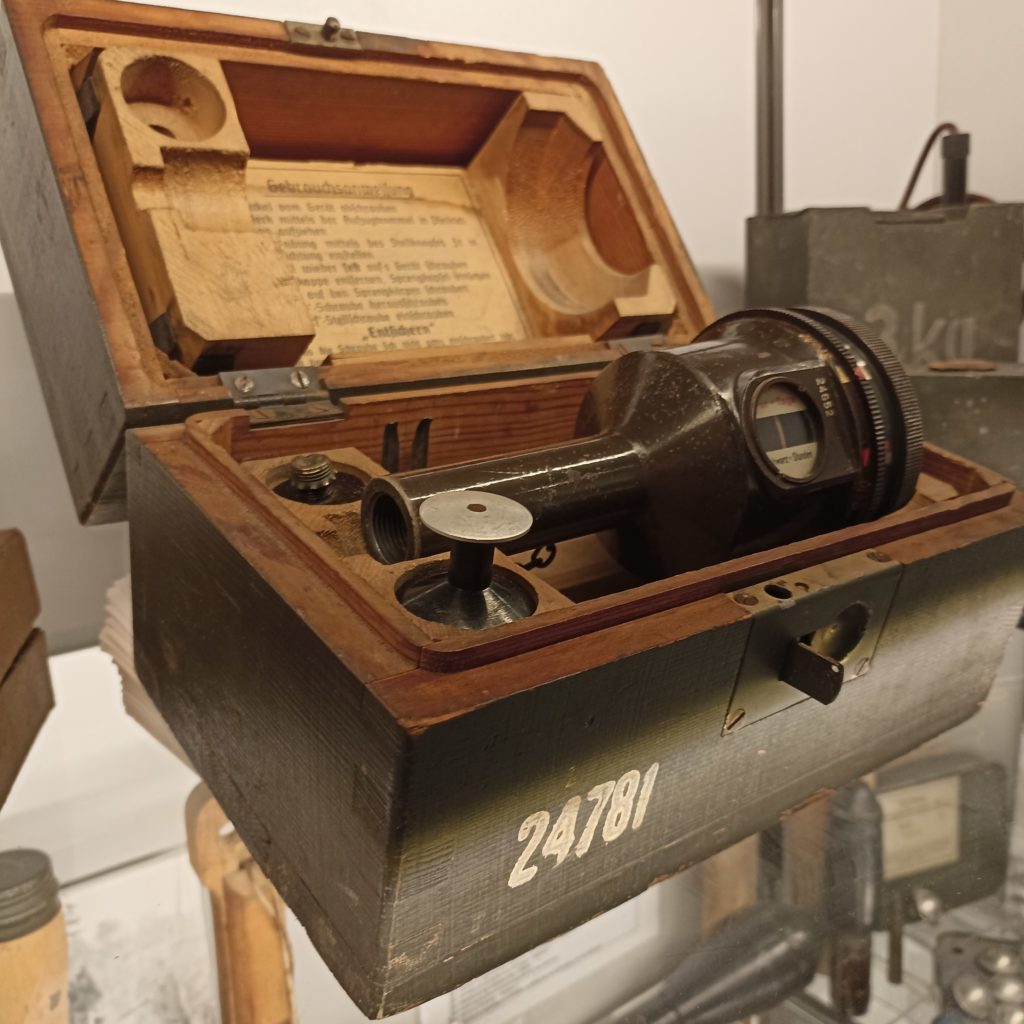
Inside, the primers are individually packed in stencilled wooden cases.
This firing device (bakelite cylinder) is used to detonate a time-delayed explosive charge.
Its setting can vary from 1 quarter-hour to 21 days.
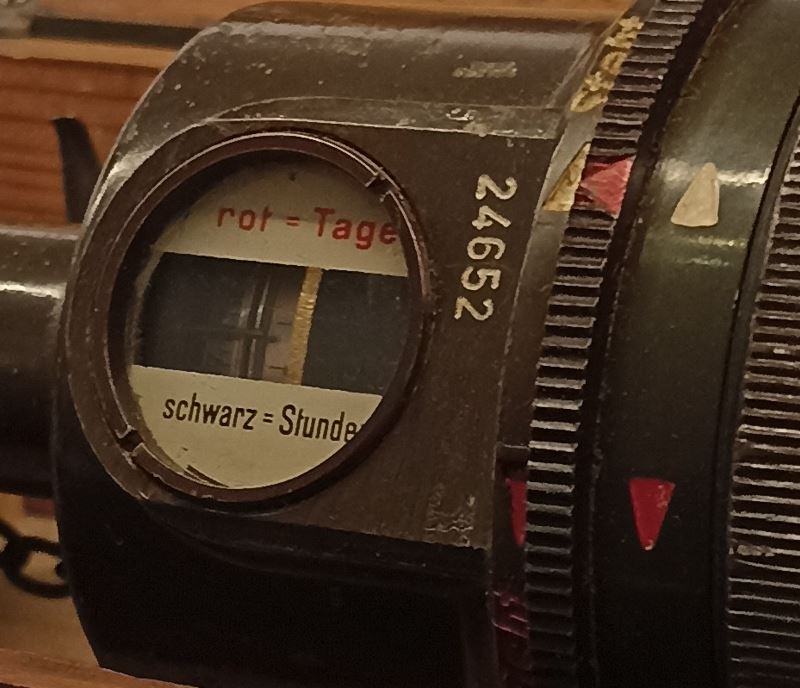
t contains a clockwork movement that drives two discs, each fitted with a slot.
At the end of the set period (red = date, black = time), when the device is switched on, the disc slots coincide and the release lever releases the firing pin and detonates the explosive charge.
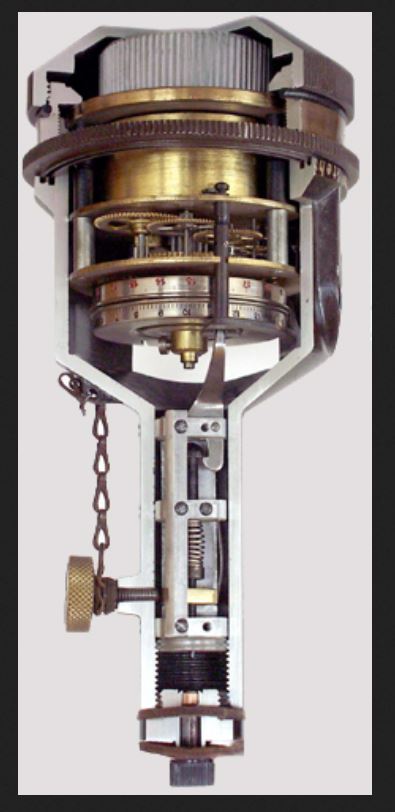
The two day and hour discs are clearly visible in the cut.
The release lever, percussion spring and lower cocking screw are also clearly visible.
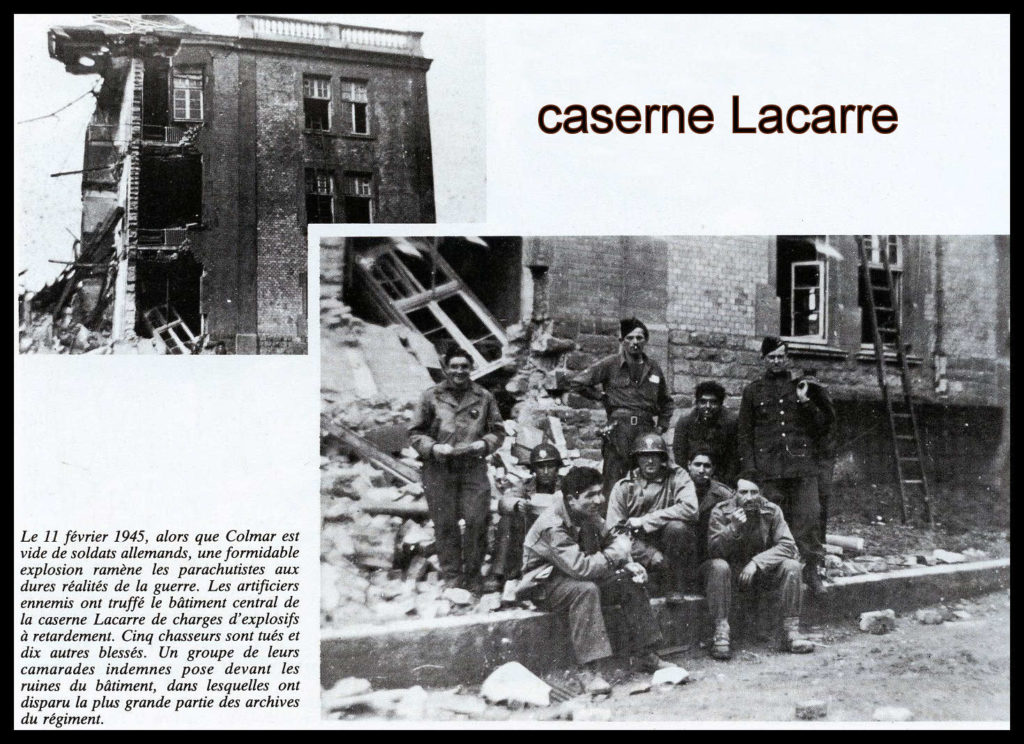
source : https://www.dbt-eod-012.com/theme_Feder-504.html
Jean-Gilbert BLONDEL 1919 – 1945
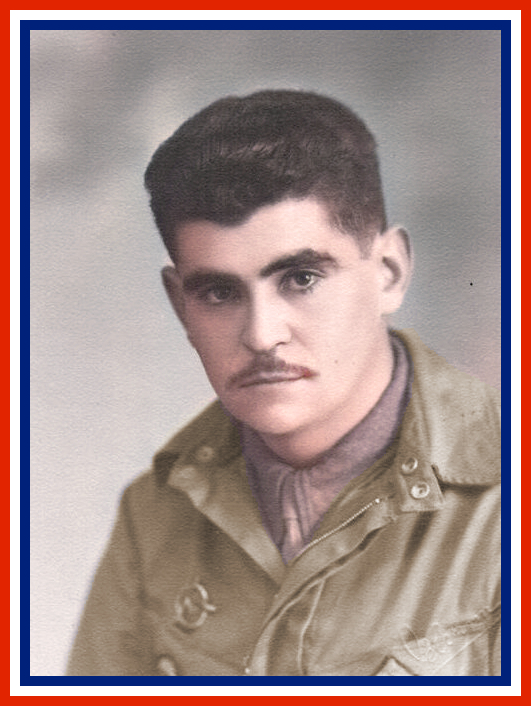
Born in Bordeaux (33) on August 7, 1919, he was killed in his 26th year during the final fighting to liberate the Colmar pocket.
Master Corporal in the 51st Infantry Regiment (51 RI), seconded to the Montpellier Cadre School in the armistice army, he escaped over the Pyrenees on March 14, 1943 to North Africa.
After 8 months’ incarceration in Spanish jails, he reached Morocco on October 23, 1943, where he joined the 1st Regiment of Parachute Chasseurs (1 RCP).
He was assigned to the 5th company in December 1943.
He obtained his parachute licence (brevet n°1952) on December 16, 1943 in Sicily.
He took part in the Sicilian and Italian campaigns.
On August 16, 1944, a regimental examination was held to appoint reserve midshipmen. The 5th company presented Jean-Gilbert and 2 of his comrades (Charpentier and Farnet) according to the 5th company’s marching log.
He was promoted to sergeant on September 3, 1944, just before his departure for France.
He landed at Valence (26) on September 4, 1944, and regrouped with the entire regiment opposite the Belfort Gap.
He took part in the Vosges campaign from October 2 to 22, and had his baptism of fire on October 4, 1944 at the Col du Broché with the ment command platoon. He was first cited in the Brigade Order by Lieutenant-Colonel Faure, commander of the 1st RCP:
Blondel Gilbert, sergeant with the 5th Company: “Young non-commissioned officer company observer, calm and courageous, rendered the greatest services to his unit commander during operations on the Tête du Midi from October 8 to 12, 1944. Distinguished himself during the counter-attack of October 18, 1944 at hill 1008 by his zeal in taking numerous prisoners and significant booty”.
This citation includes the Croix de Guerre 1939-1945 with bronze star.
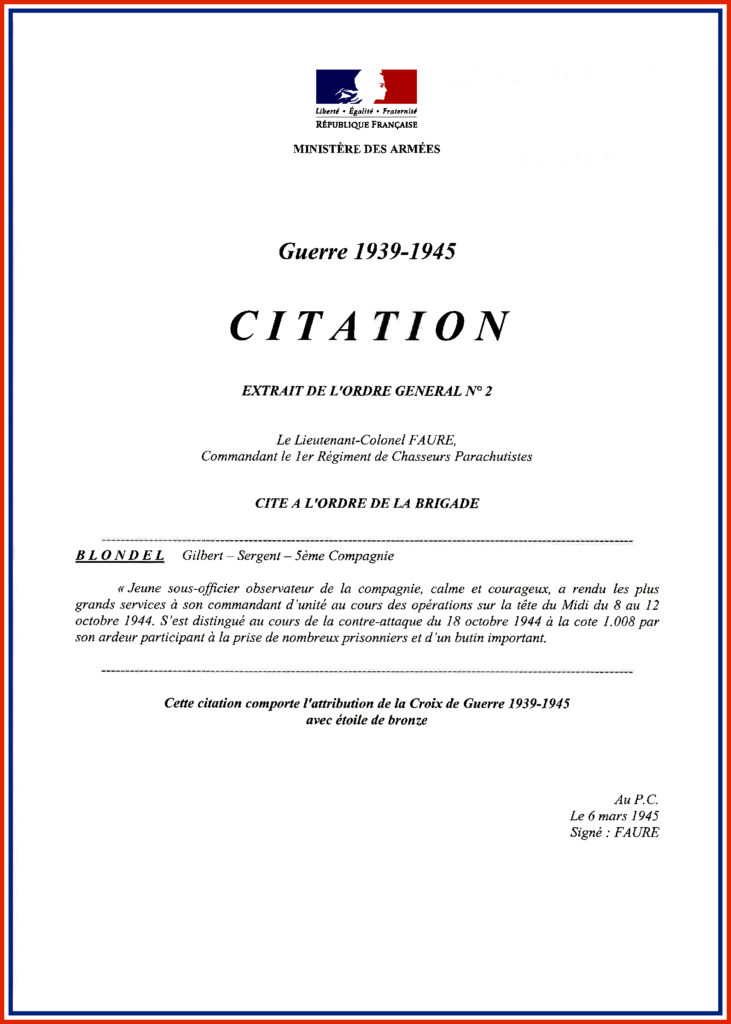
Pendant la campagne d’Alsace (du 13/12/1944 au 2/02/1945) il fait le sacrifice ultime et tombe glorieusement au Champ d’Honneur lors des âpres combats de Jebsheim, le 28 janvier 1945 (du 25 au 30 janvier,75 de ses camarades y laisseront la vie en seulement 5 jours). Les circonstances précises de sa mort ne sont pas connues mais d’après le récit de Robert Wagener on sait que les combats du 28 janvier 1945 ont été particulièrement meurtriers de part et d’autre.
Dans le journal de marche de la 5ème compagnie nous pouvons lire pour la journée du 28 janvier 1945 :
“1h. La 5° cie reçoit la mission d’aller renforcer la 6° cie arrêtée devant le triangle de routes à 300m du sud du village.
Nous occupons 4 maisons mais nous sommes bloqués et il nous est impossible de continuer avec nos faibles moyens. 3 blessés : Minerve, Gelabert, Senechal.
7h30 : Ordre de repli sur le carrefour limite de notre 1ère mission. Nous nous installons en défensive dans les maisons face au sud en attendant des moyens plus forts pour reprendre l’attaque.
11h : Nous reprenons l’attaque en liaison avec un char Medium de la 5° D.B. Nous avançons lentement, l’ennemi défend chaque maison, il faut les prendre une par une en profitant du tir du char. Nous faisons 42 prisonniers, mais nous avons des pertes sérieuses : sont tués : S.C Paoli, Sgt Blondel, C.C Fages et Anfosso, chasseurs Villaudy, Spacagna, Bonifacci. Sont blessés Adjt Marquet, chasseurs Maire, André, .Agard.”
Le 17 juillet 1945 le général de Gaulle, cite à titre posthume, à l’ordre de l’Armée Aérienne le sergent Blondel :
« Jeune sous-officier exceptionnellement brillant et d’un dévouement à toute épreuve. S’est particulièrement distingué au cours des deux combats des 27 et 28 janvier 1945, à Jebsheim, comme sous-officier de liaison entre l’unité et les chars d’accompagnement, réalisant, avec un sang-froid et un mépris du danger admirables, plusieurs liaisons difficiles sous le feu intense et à très courte distance d’un ennemi puissamment organisé dans les maisons. A trouvé une mort glorieuse alors qu’il transmettait au chef de char une demande de tir d’intérêt capital pour la progression de l’unité. A déjà été cité.
Cette citation comporte l’attribution de la Croix de Guerre 1939-1945 avec palme.
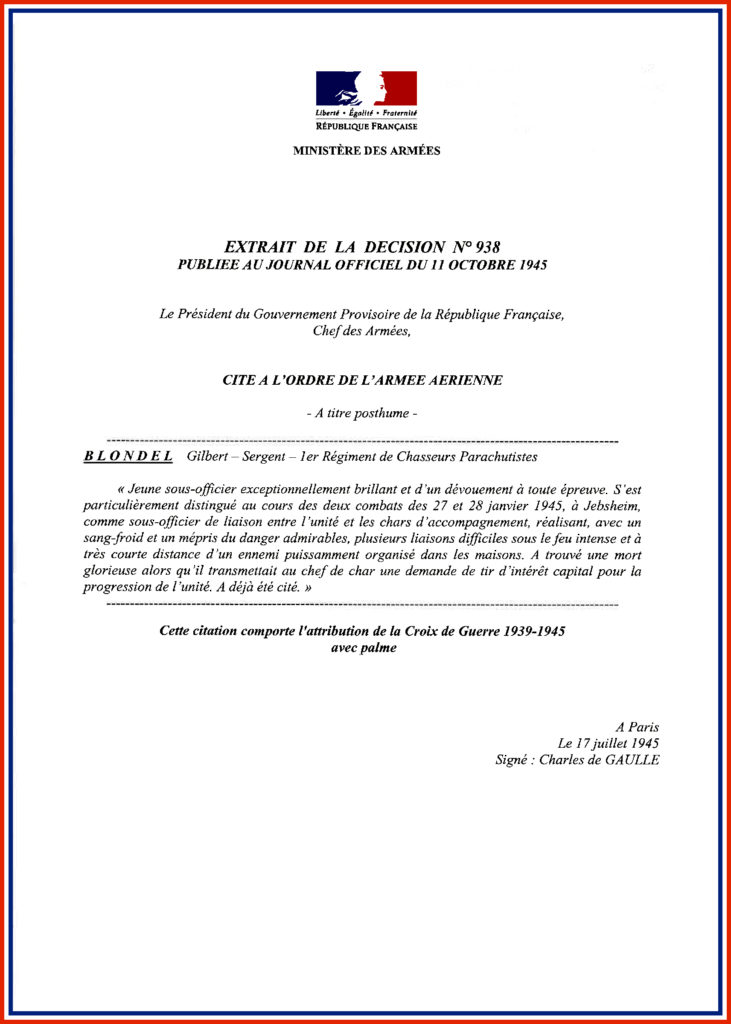
Il est enterré provisoirement au cimetière de Bergheim (68) dans la tombe n° 15.
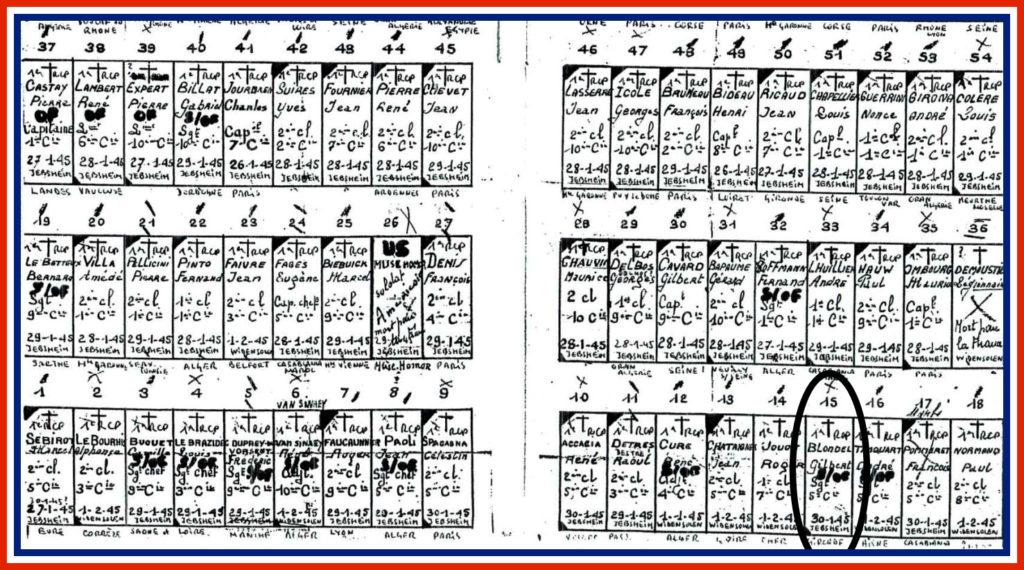
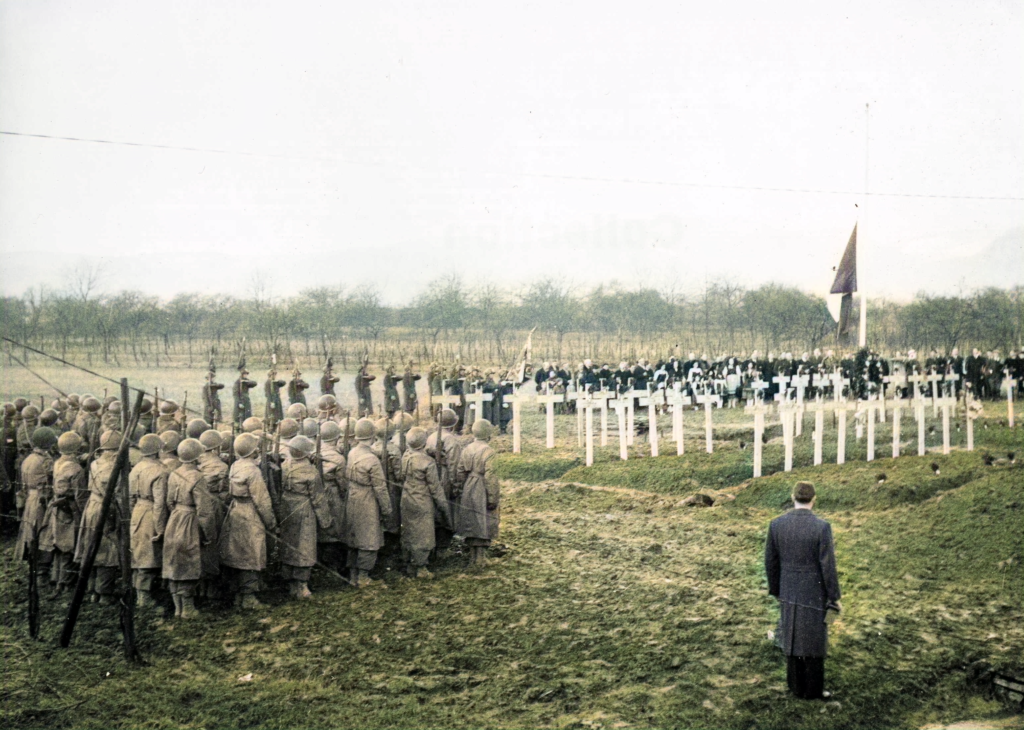
De nos jours il repose en paix au milieu de ses camarades de la Première Armée Française à la Nécropole Nationale de Strasbourg-Cronenbourg section F rang II nunéro 7.
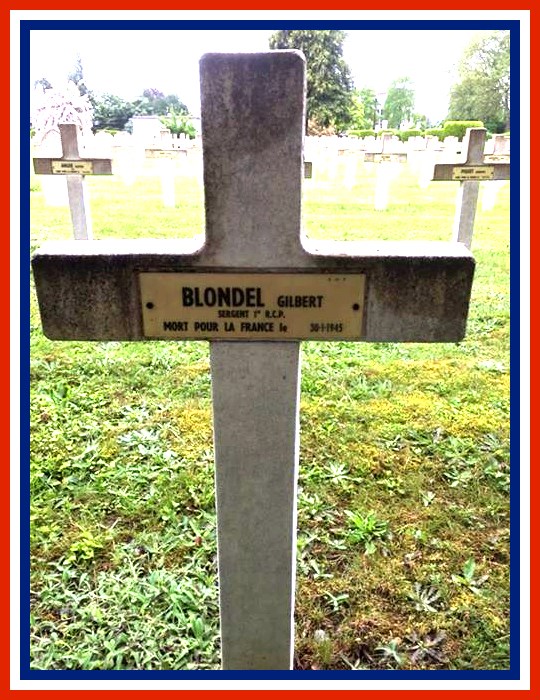
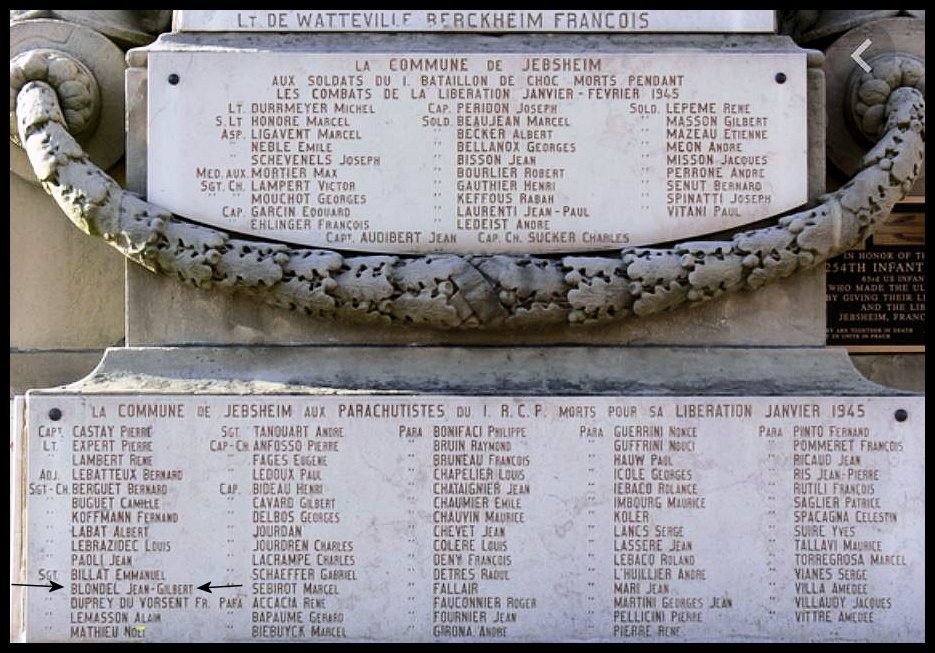
Gunther WECHSLER 1923 – ???
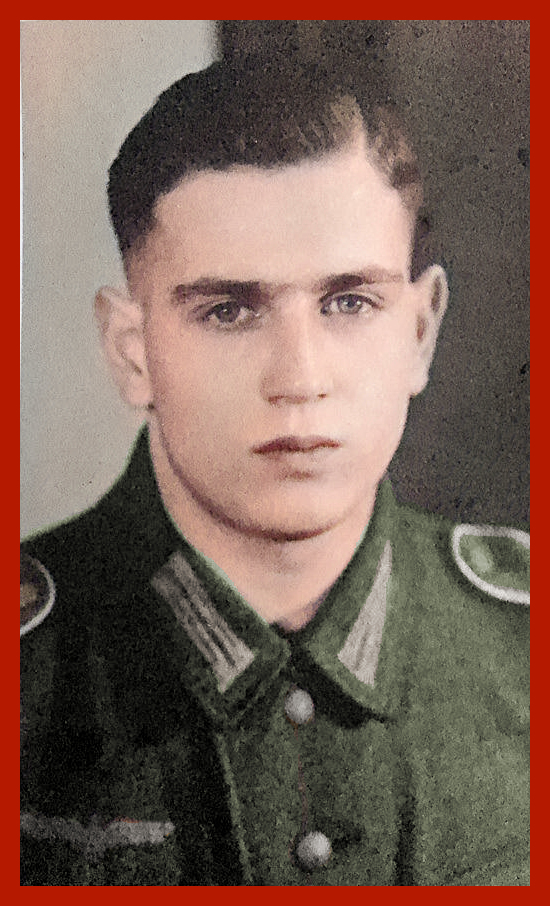
He was born on March 4, 1923 in Delligsen (a small town in what is now Lower Saxony, some forty kilometers from Hanover).
According to his identity card (Kennkarte) issued on March 23, 1942, he was an apprentice salesman prior to his enlistment in the German army.
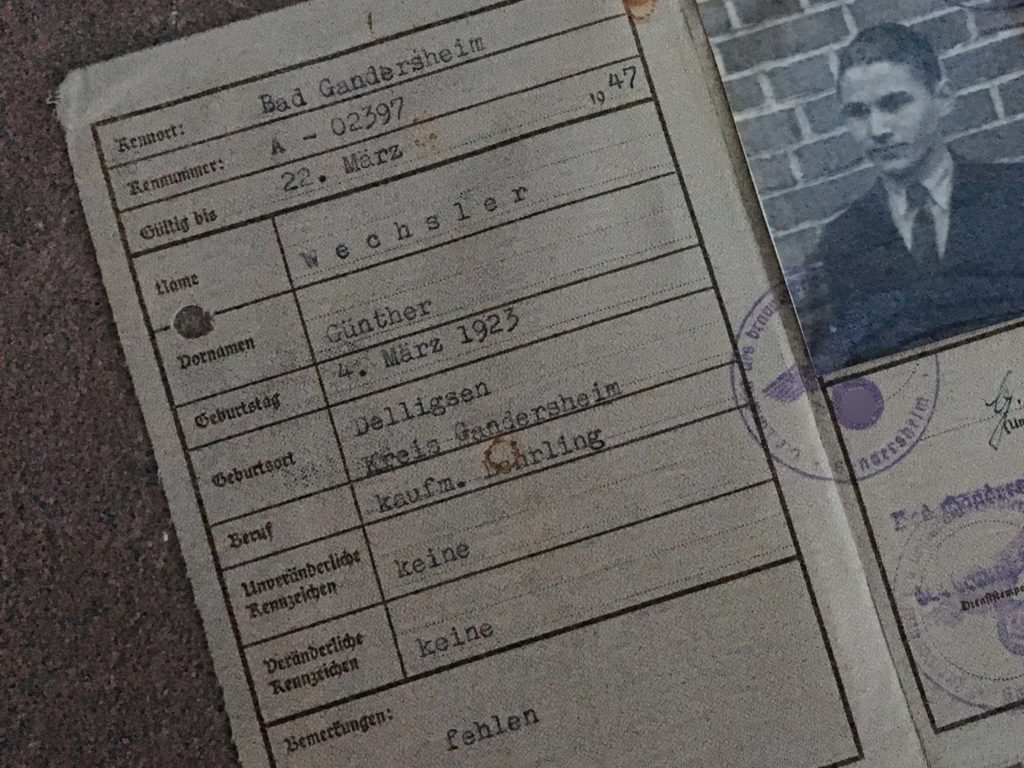
He was a Gefreiter (corporal) in the German army, with the 7th Battery of the Artillery Regiment 1089 (7./A.R.1089), a divisional artillery regiment of the 189th Infantry Division (189 ID).
Through his photo, a few papers and military certificates, we briefly retrace his career, which may well have ended in the Colmar pocket, as his unit and the 189th ID were almost entirely decimated in early February 1945.
The few remaining elements were transferred to the Nr 805 division.
We discover that he was wounded on July 18, 1944 (place and unit unknown), and that on 12/1944 he was awarded the “VerwundetenAbzeichen in Schwartz” (certificate for wounded in black), which was generally awarded for 1 to 2 wounds.
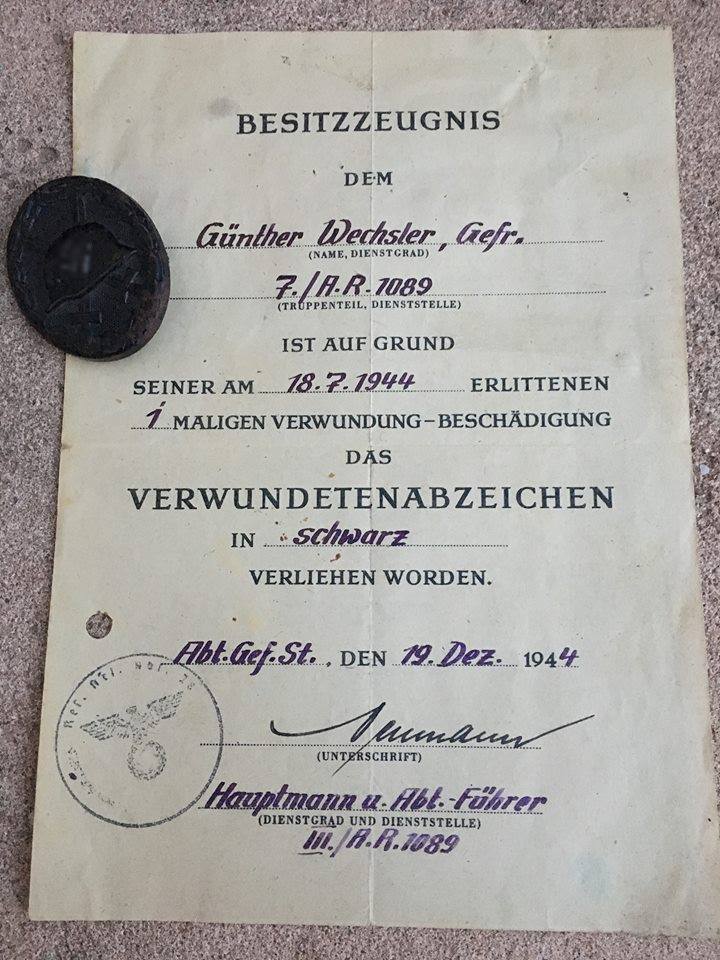
The 189. ID having been created in October 1944, this soldier was in another unit when he was wounded, and most likely joined the 189.ID on his return from convalescence.
On January 30, 1945, he was awarded the “Kriegsverdienstkreuz 2. Klasse mit Schwertern” (2nd-class war merit cross medal with sword), which rewards a soldier for exceptional service in battle (but not enough to qualify for an iron cross, which was awarded for exceptional bravery) – as a reminder, the fighting in the Colmar pocket ended on February 9, 1945.

The accompanying certificate is signed by the commander of the 189th ID (from 15/11/44 to 4/02/45), Oberst(colonel) Eduard Zorn, who was killed on February 4, 1945, by shrapnel in the Sainte-croix-en Plaine(68) sector, a few kilometers from Colmar, freshly liberated on February 2, 1945.

Eduard Zorn was awarded the Knight’s Cross of the Iron Cross (Ritterkreuzträger), and posthumously received the oak leaves (he was even promoted to the rank of Major General following his death).
To this day, we do not know whether Günther Wechsler survived the conflict…research continues…
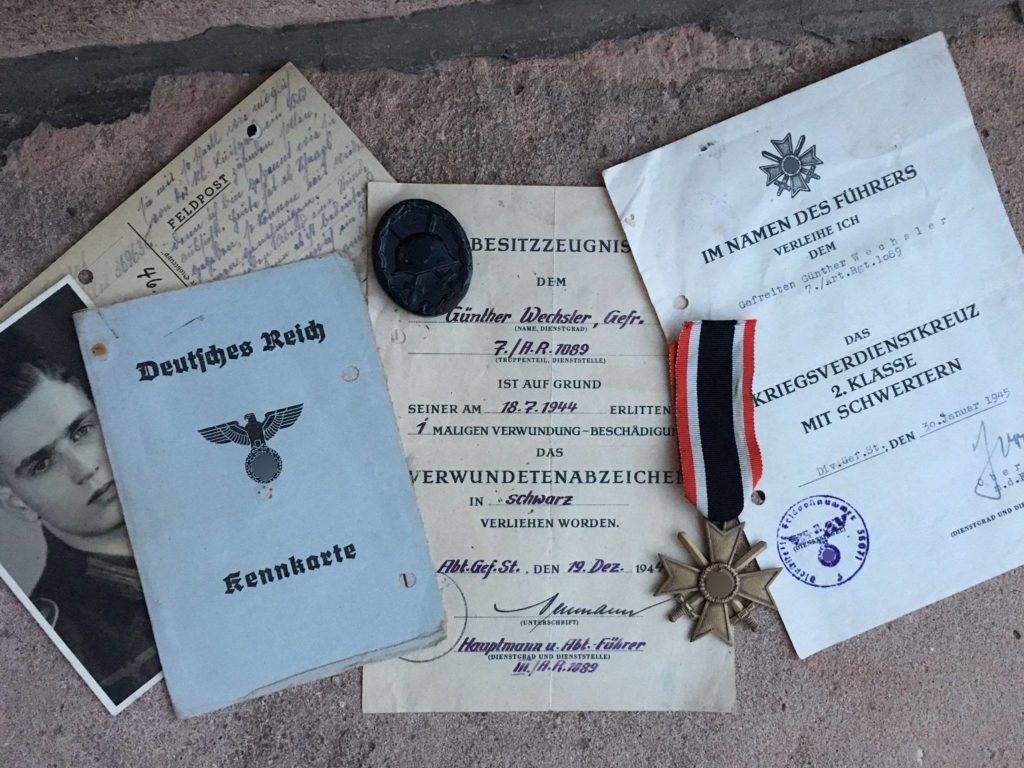
Germaine Joséphine André née GOETTELMANN 1921 – 2000
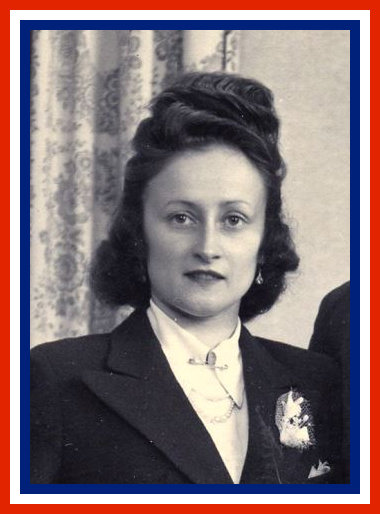
She was born in Sélestat (67) on July 16, 1921.
After the war, she was affectionately known to her family as “Aunt Germaine”.
Naturally cheerful and always ready to laugh heartily, few really knew what she, like so many others, had endured during the annexation of Alsace.
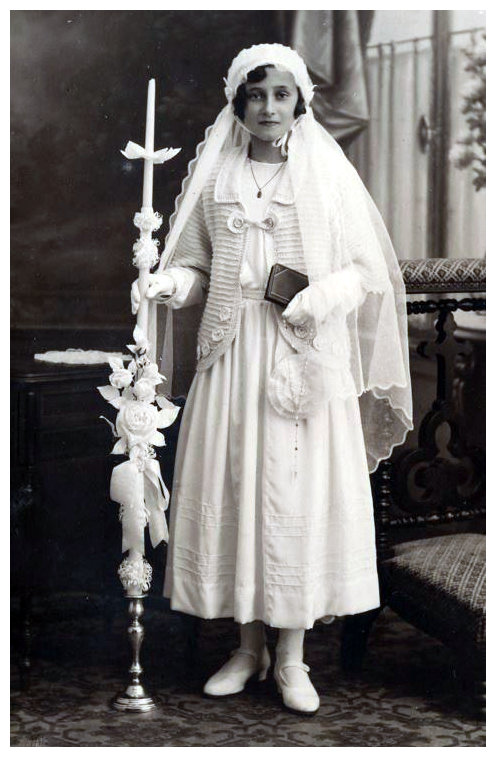
A fierce patriot, the defeat of France and the annexation of her beloved Alsace were unbearable for her.
Never one to mince her words, she was quick to make pro-French and anti-Nazi comments.
One “time too many” was when she sang the Marseillaise (a double ban, since the Nazis had forbidden Alsatians to speak French, let alone sing the national anthem) on a crowded train…
…one of those present denounced her to the German authorities, who were quick to repress her and send her to the Schirmeck reform camp.
Like 15,000 other Alsatians and Moselle inhabitants, she was interned at the infamous Vorbruck-Schirmeck camp (Sicherungslager), where the Nazis “re-educated” those who had resisted the Nazis.

Schirmeck was a re-education (then security) camp, where work was deliberately hard and degrading, with bullying, harassment, violence, interrogation, indoctrination, beatings, physical and moral torture, deprivation… with detention periods ranging from a few days to several months, depending on the charges against the person concerned.
The camp was located in the commune of Schirmeck (67), 6 kilometers from the Struthof concentration camp, and operated from 1940 until its liberation at the end of November 1944.
The very name of Schirmeck terrified the Alsatians, and this prayer “circulated” by word of mouth:
“Lieber Herrgot, mach’ mich stumm, ” My God, make me mute,
Dass ich nicht nach Schirmeck kumm! So that I don’t go to Schirmeck!
Lieber Herrgot, mach’ mich blind, My God, make me blind,
Dass ich alles sehr schön find! So that I find everything beautiful!
Lieber Herrgot, mach’ mich taub My God, make me deaf,
Dass ich alle Lügen glaub’! ” So that I believe all the lies!”
In the words of the time, “S.O.S.” was synonymous with :
“Schweige oder Schirmeck”, meaning “Shut up or it’s Schirmeck”.
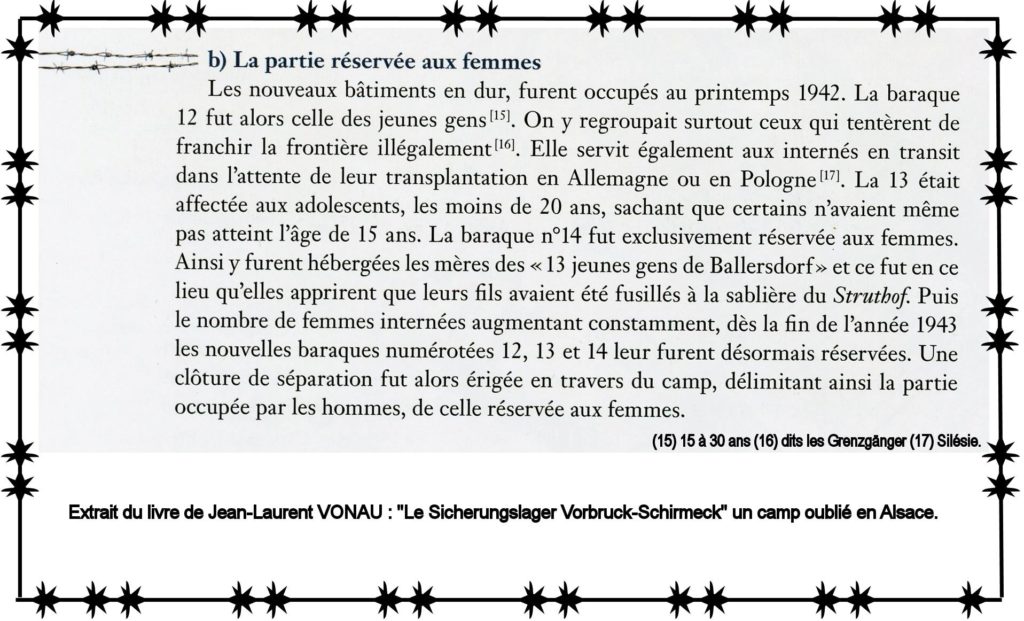
The 14…at Schirmeck in 1944…
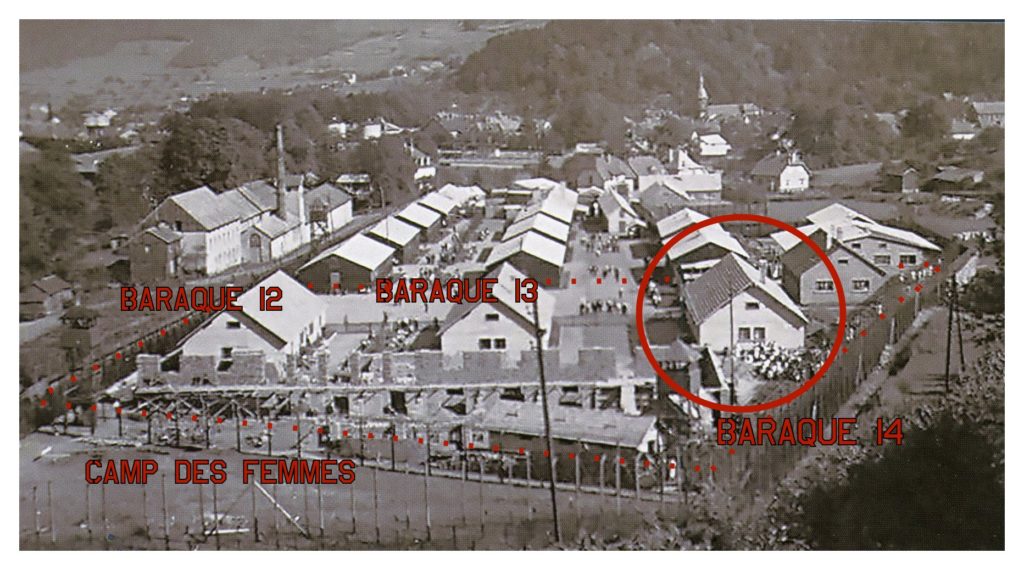
A lover of words, of her country France, a dialect speaker, it is through a few “poems” in French or Alsatian that she leaves us her testimony, telling us of her ordeal and that of her fellow inmates, with their fears and hopes.
On this subject, she has left us 3 poems written in 1987 and 1988 (in full at the end of the portrait)… a powerful and moving testimony to remind us of all those who suffered so much:
La 14!! in Schirmeck in 1944:
“I was in 14, the best-viewed hut.
It wasn’t the 4-star we knew.
That’s where, on August 15, I sang at the top of my lungs
Gounod’s Avé Maria to celebrate the holiday.
And the virgin up there who watches over the valley
From behind the bars, we admired her.
People waved, white handkerchiefs fluttered
They greeted relatives back at camp who were languishing.
We weren’t allowed to make the slightest gesture
On the shared bowl, there was no leftover.
The shawls well drawn, beware of false folds
The stakes are high… it’s your life!
At 5 a.m. it was time to stand to attention
And watch out if we find the slightest louse on you.
I saw her come back, the girl with the pretty hair
She was all shaved, you couldn’t see her eyes.
That swollen face, her lips all bloody
It was a whiplash and I stepped out of line.
She was going to hide to cry in silence
And I consoled her in the name of Notre France.
My blood ran cold and I shook her
Because she wanted to kill herself.
Not for a cause like that…your hair will grow back,
Don’t do anything stupid…Paris is liberated!!!
This earned me from my superior jailer
A fierce hatred until the end of the war…
I’ll see her all my life, a precious stone on my finger
Rhinestones or a lot of carats
Turned to questioning, when you were opposite
This stone towards the palm…left pretty traces…
I prayed for peace, I prayed in silence
We prayed from the heart, for our country…France.”
Germaine 1987.
“Aunt Germaine” died on February 20, 2000 in Colmar in her 79th year.
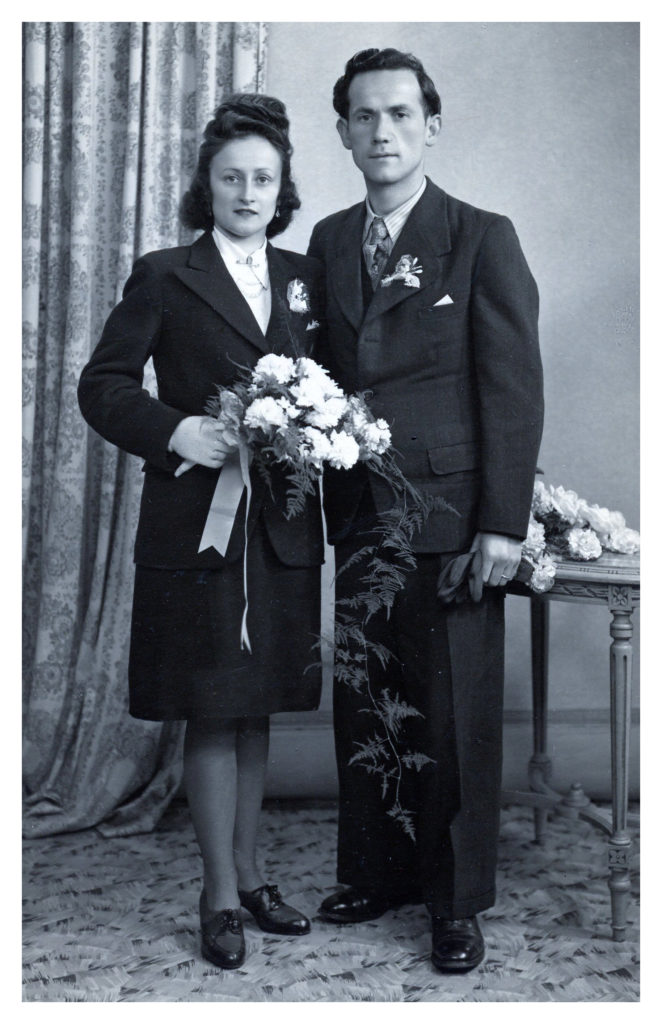
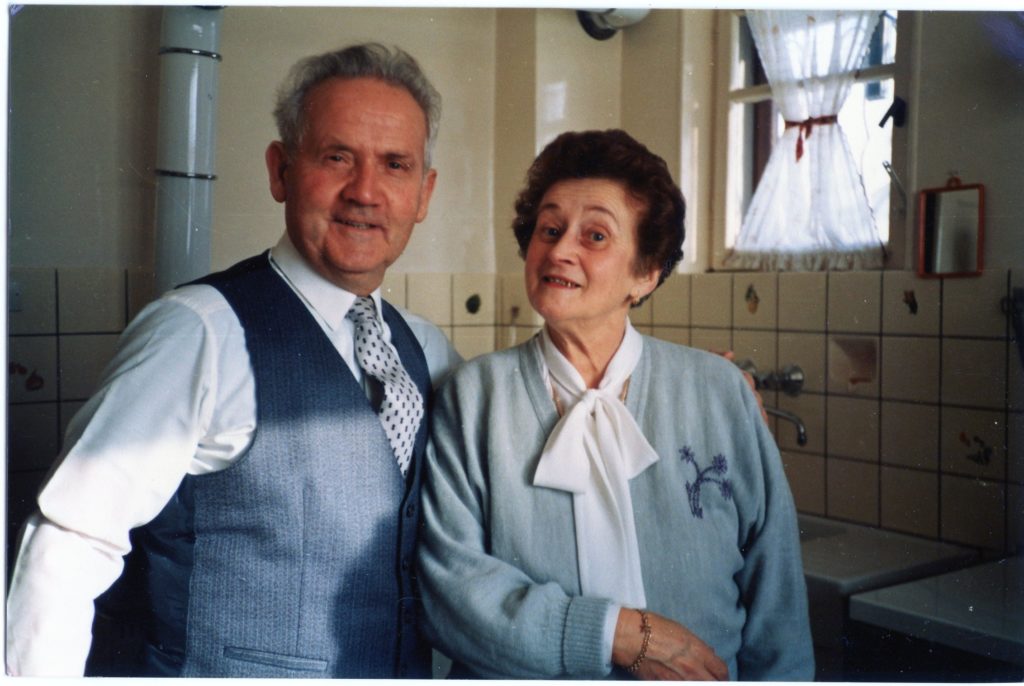
Poem and portrait (private collection).
Photo, camp map and additional text from Jean-Laurent Vonau’s book “Le Sicherungslager Vorbruck-Schirmeck un camp oublié en Alsace”.
Original texts:
“We were thousands”.

“the boots of these foreigners”
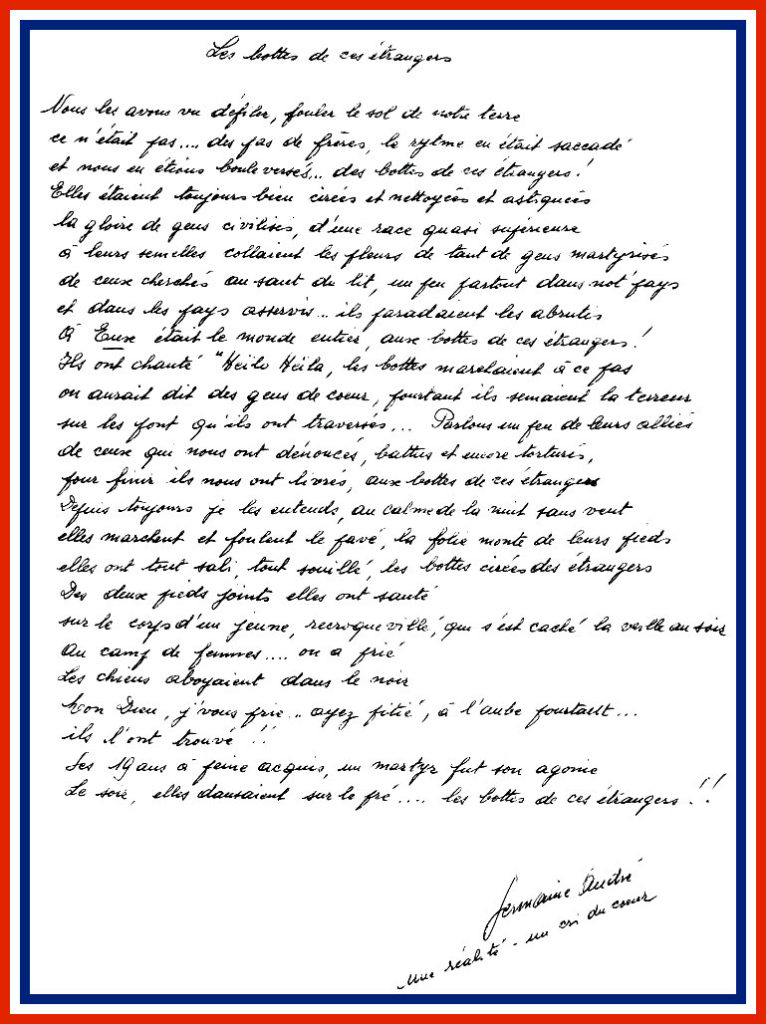
The 14 at Schirmeck in 1944!


André Raoul Théodule TANQUART 1920 – 1945
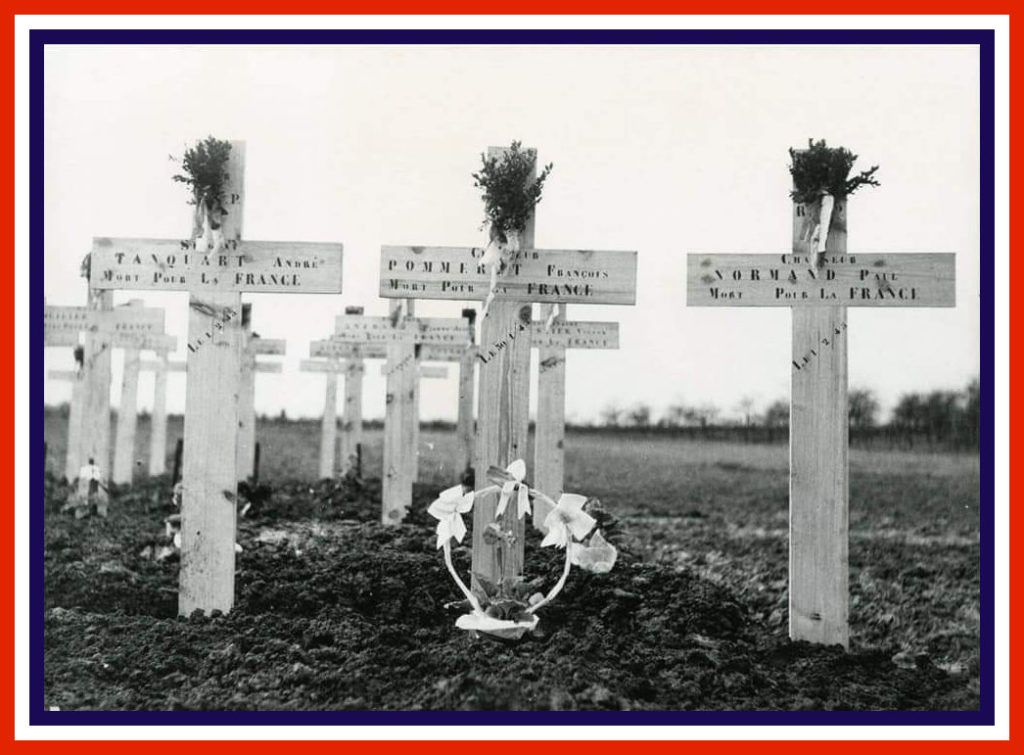
Sergeant TANQUART André, brevet 1839, of the 5th Company of the 1st RCP, Died for France on February 1, 1945…
We pay tribute to Sergeant Tanquart and his comrades of the 1er Régiment de Chasseurs Parachutistes, who fought heroically to liberate our region at the cost of heavy losses.
Born on July 8, 1920 in Marchais, Aisne (02), he worked as a mechanic in civilian life.
On July 20, 1939, he signed up voluntarily for 3 years with the Laon military quartermaster’s office as part of Bataillon de l’air n°112, and was attached to Bataillon de l’air n°122 on October 21, 1939.
Appointed corporal on March 1, 1940, he was posted to Bataillon de l’Air n°113 de Rochefort on April 16, 1940, then to the Versailles-Villacoublay air base (BA 107) on April 26, 1940.
Following the defeat of June 40, he was posted to the Clermont-Ferrand repair workshops on August 23, 1940, where he completed a training period at the Atelier Industriel de l’Air. He was then transferred to the Pau storage depot as a 2nd class specialist on March 29, 1941.
On August 22, 1941, he was posted to French West Africa (AOF), and on September 3, 1941 set off for the Sainte Marthe camp in Marseille. He boarded the liner “Gouverneur Général Tirman”, bound for Oran on September 10, 1941.
Having disembarked on the 10th, he left on the 11th for Casablanca, arriving on September 14th.
On the 26th, he boarded the liner Condé, bound for Dakar in Senegal.
Arriving in Dakar on October 4, 1941, he was assigned to the Ouakam air base in the Groupe de Chasse I/4, equipped with Curtiss H-75A aircraft.
On January 13, 1942, he obtained his “Tourism” driver’s license.
He was promoted to master corporal on July 1, 1942, and 1 year later to sergeant on July 1, 1943.
Assigned to the departure of parachutists to Oudja (Morocco) by message no. 241 of January 1, 1944, he set off on January 24, 1944.
To reach North Africa, he embarked in Dakar on the liner “Hoggar” and landed in Casablanca.
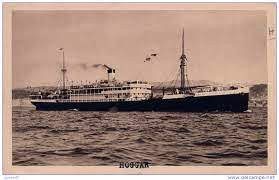
He was assigned to the 1st RCP by memo no. 379 of February 12, 1944, and was commissioned on the 16th, arriving at the corps on February 20, 1944.
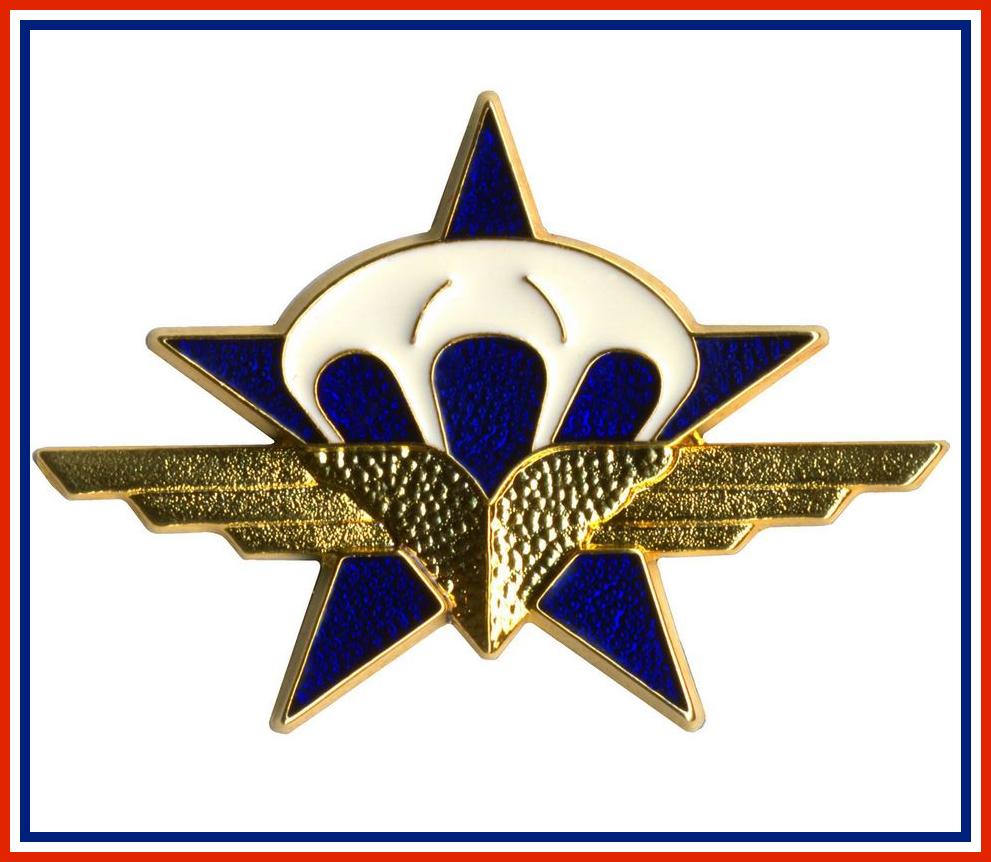
He flew to Trapani on March 30, 1944, arriving the same day.
He was commissioned on May 1, 1944 in Sicily: brevet 1839.
On May 5, 1944, he was transferred to the 1st Battalion, 5th Company.

From the 5th company’s logbook, we learn that he was wounded on June 9 during a jump (with 8 other parachutists) while maneuvering under operational conditions on the heights overlooking the Trapani – Palermo road.

On September 4, the company left Rome for France by plane, landing in Valence at 10:30 am.
On the 28th, they boarded trucks for Lure. The Regiment was placed at the disposal of the 1st French DB on the 30th.
Sergeant Tanquart arrives in the Vosges in early October.
He leads the 1st squad of the 5th Company’s 1st platoon.
October 4, 1944 saw the company’s baptism of fire in the Vosges, at the Broché, Rhamné and Morbieux passes.
We discover that he is “medically evacuated” on October 15, 1944.

On December 7, 1944, the company left Villevieux for Gerstheim (67), which it reached on the 8th and where it received a visit from General Leclerc on the 9th. The 1st RCP will fight in this sector with the 2nd DB.
On the 14th, the 1st battalion attacked Bindernheim, led by the 5th Cie.
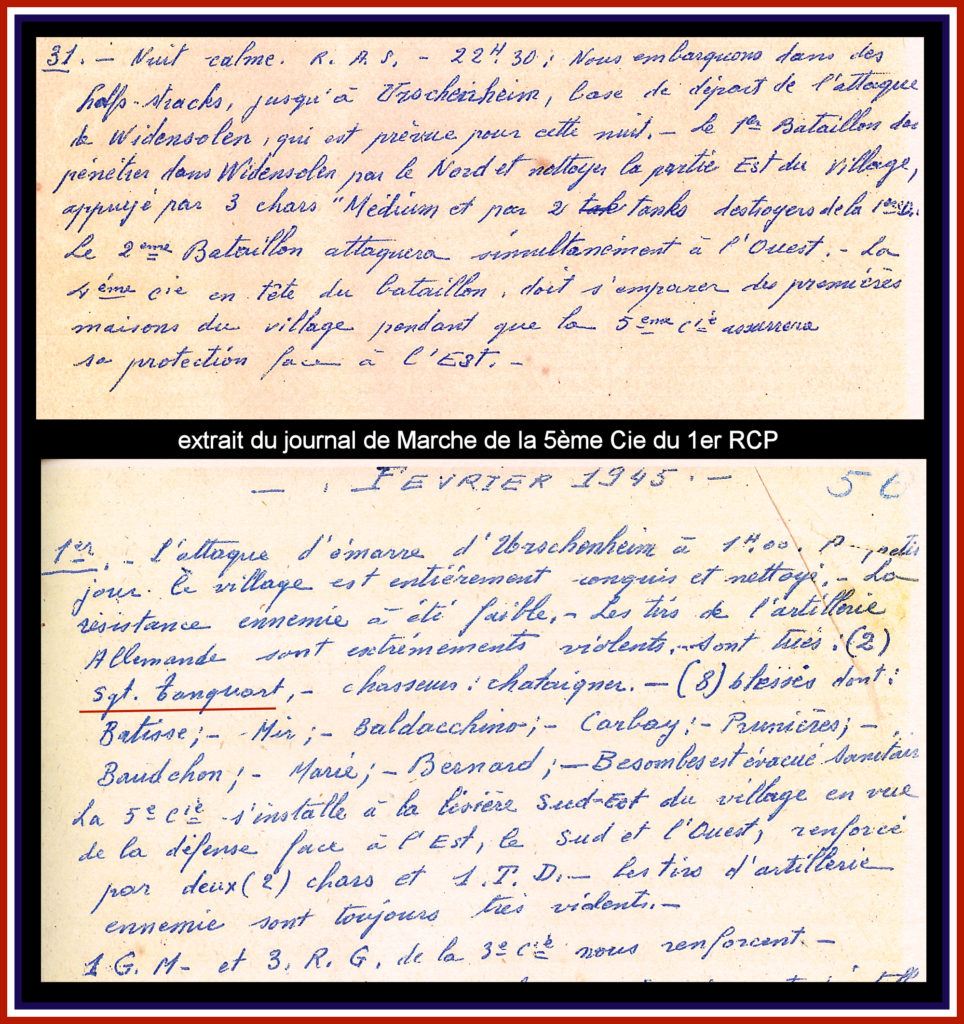
At the beginning of January, the 5th Cie was back in Orbey. It entered Jebsheim on the 27th and had to fight from house to house in polar temperatures against the formidable mountain troops of the 136th and 137th gebirgsjäger regiments.
Sergeant Tanquart was awarded 2 commendations for his actions during the battles of Bindernheim (67) in December 1944 and Jebsheim & Widensolen in 1945 (posthumously), where he made the ultimate sacrifice, in his twenty-fifth year, in the middle of the fight to liberate the last-mentioned village.
Quote 1: “Brilliant squad leader, with knowledge and drive beyond praise. Constantly at the top of his game, training his men to perform at their best. Particularly outstanding on December 14, 1944 during the attack on Binderheim, leading his group with irresistible élan despite the violence of the bombardments and enemy automatic weapons fire.
Signed FAURE . Sétif 15/10/46
Citation 2: “Non-commissioned officer of high moral value and professional conscientiousness beyond all praise, although in poor physical condition, took part brilliantly in the hard fighting at Jebsheim on January 27 and 28, 1945, leading his group of machine-gunners with admirable élan as close as possible to the voltigeurs and supporting them with the precise and effective fire of his gun, thus contributing to the capture of several houses strongly held and organized by a most tenacious enemy.
Died a glorious death on February 1, 1945 during the attack on Widensolen, while carrying his group forward to protect the accompanying tanks”.
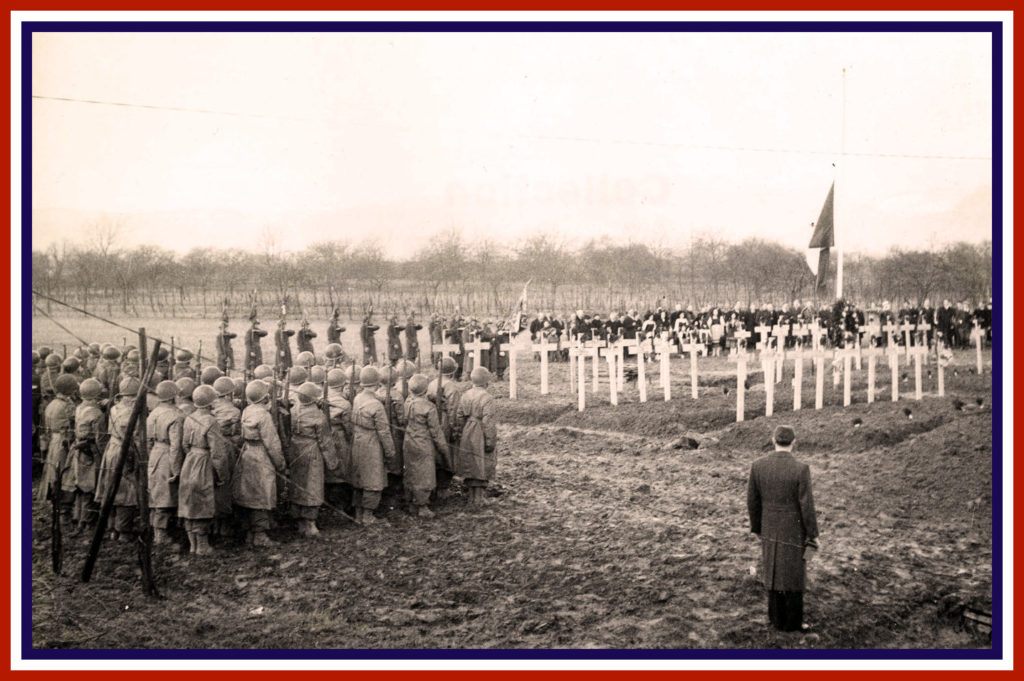
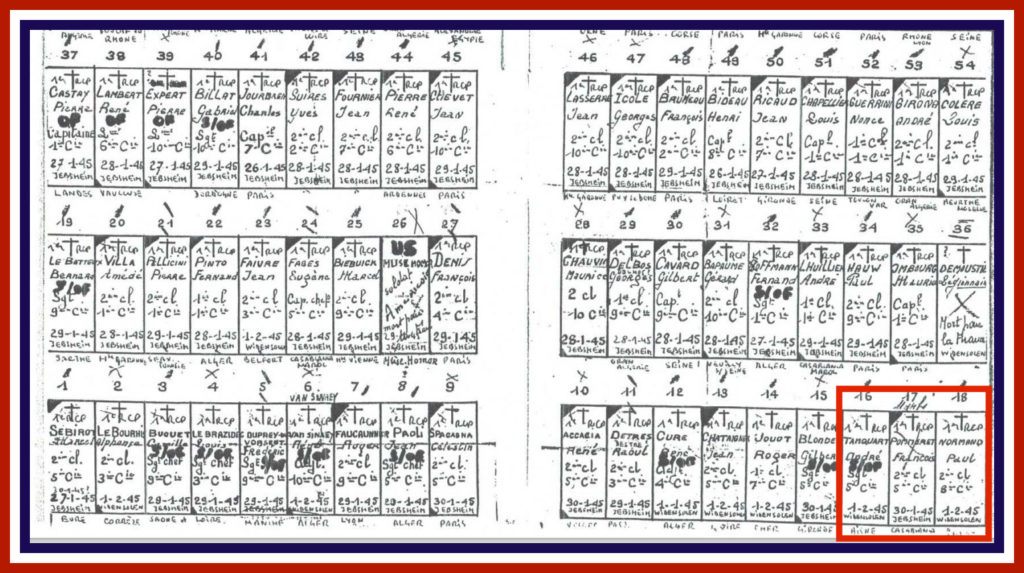
This posthumous citation to the Order of the French Air Force was approved on 17/7/45 by decision no. 938 of the President of the Provisional Government of the French Republic.
This publication is dedicated to all our glorious “Rapaces” of the 1st RCP.
A special thought for the 129 killed and 339 wounded in the Vosges campaign and the 176 killed and 512 wounded in the Alsace campaign.
Par Saint-Michel vive les Paras!
Ps: we are taking advantage of this publication to launch an “appeal” to find a photo of Sergeant Tanquart in order to put a face on this exceptional man and complete our documentary collection.
Photo sources and documentation: Robert Wagener’s books – ECPA – archives départementales – jmo of the 5th Cie of the 1st RCP.

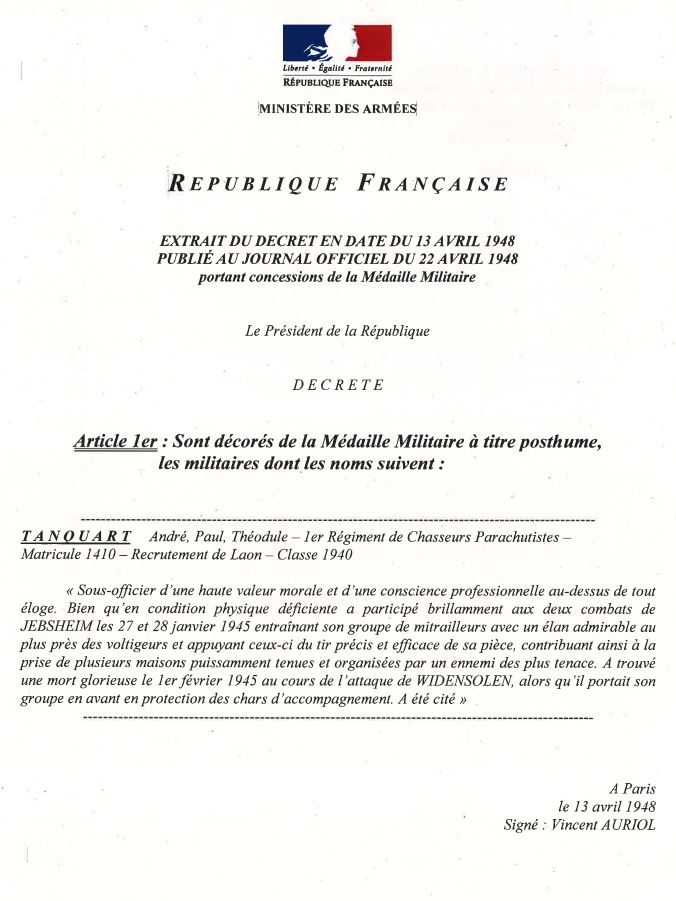
André CORTES 1927 – 2019
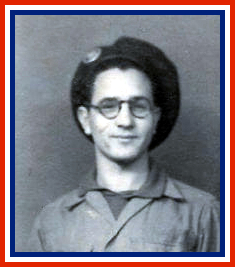
André CORTES was born on April 10, 1927 in Algiers (Algeria).
After the Allied landings in North Africa on November 8, 1942, this “child of Bab-el-Oued” enlisted at the age of 16 at the Hussein Dey cavalry school, where he obtained his driving license and a radio operator’s certificate.
Eager to fight, he enlisted in early 1944 in the 1er Régiment de Chasseurs parachutistes (1st RCP), but was only offered an administrative post due to his poor eyesight.
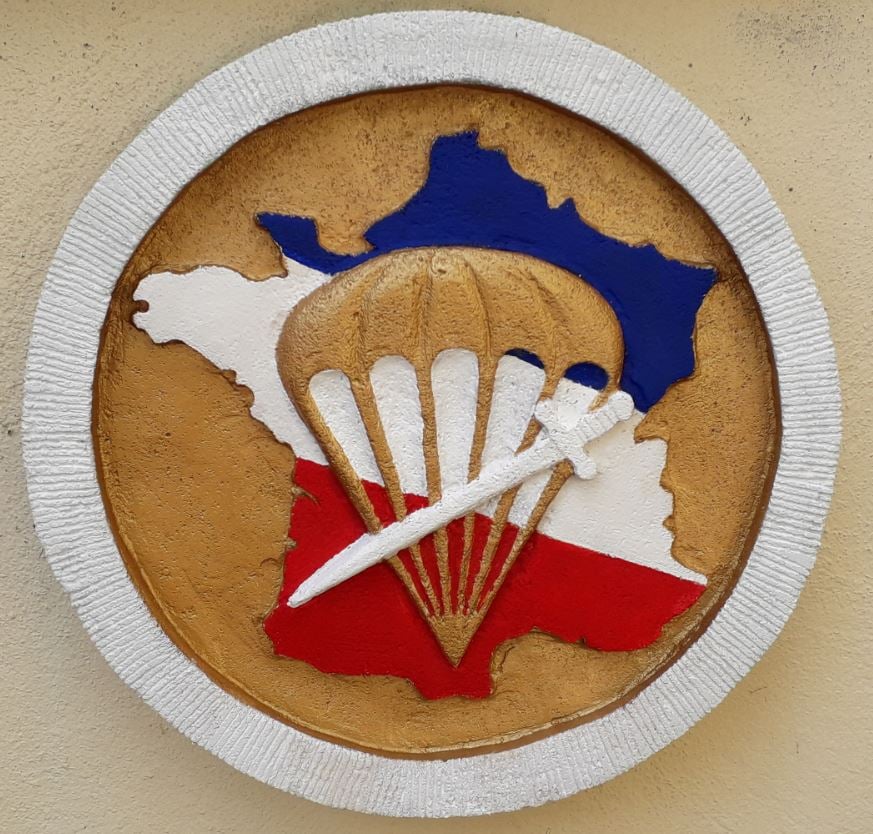
However, he cancelled his contract and headed for Staouéli in April 1944 to join the C.OS of the Bataillon de Choc, where he underwent the highly selective and demanding training of the shock commandos. He made 4 parachute jumps on June 20, 1944.
On August 4, 1944, he left Algiers for Corsica aboard the “VILLE D’AJACCIO” and joined the Bataillon de Choc in Cuttoli, awaiting the Provence landings on August 15, 1944. He was assigned to the 4th company, 1st section, 3rd group.
His baptism of fire came after the landing in Provence on August 20, during the fighting at the Poudrière de Toulon on August 22, 1944; he was 17 years old.
He took part in the entire campaign to liberate France:
…Dijon, September 18, 1944, André Cortès with Jean-Louis Fau…
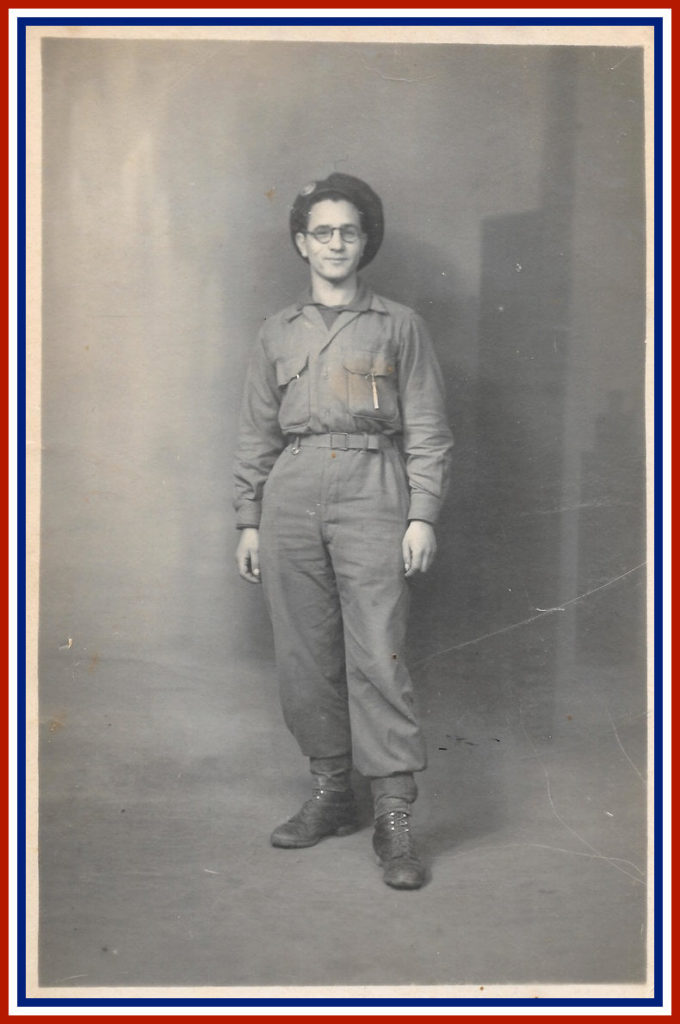
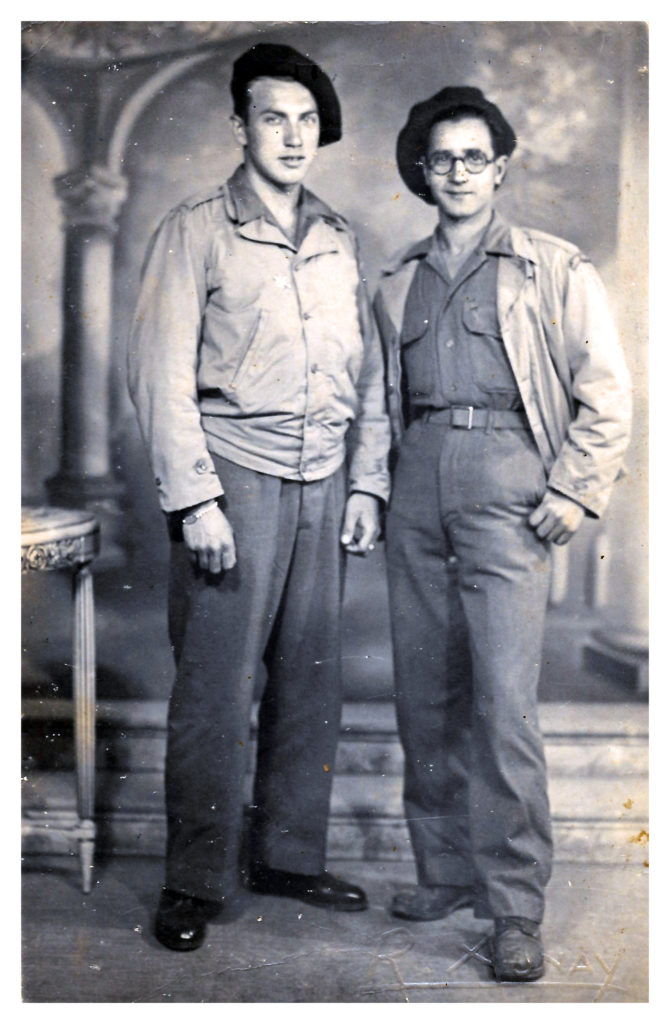
…notably the hard fighting in Haute-Saône, the Vosges (hill 820, Servance)…where he earned his first commendation:
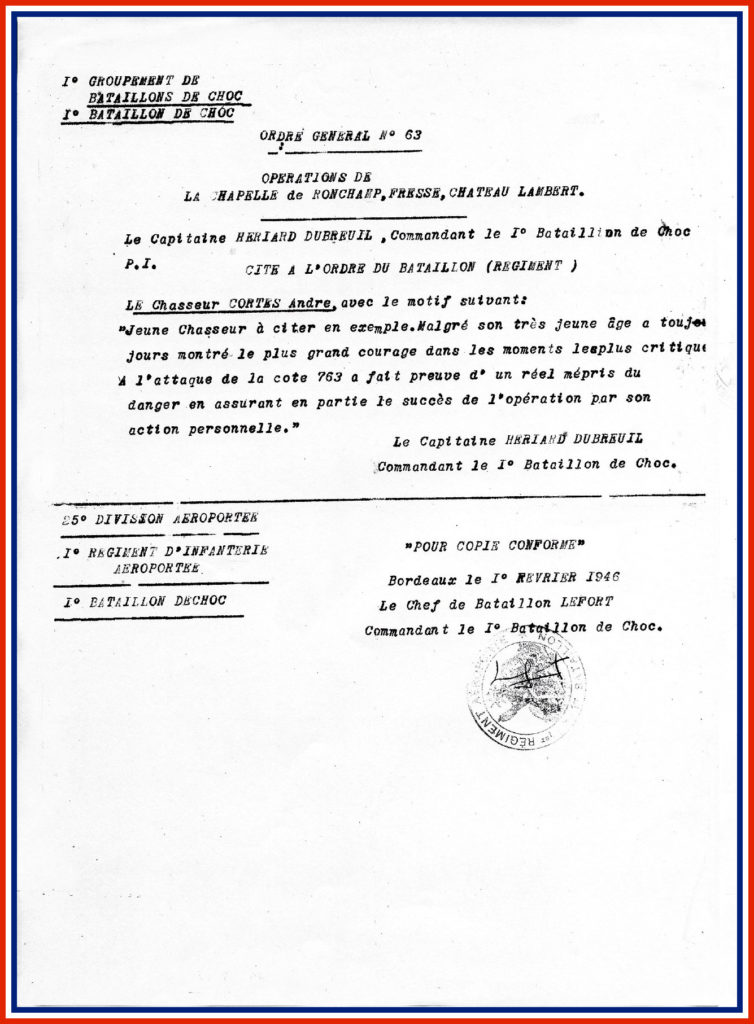
In the early hours of October 4, 1944, on hill 820, André Cortès and his platoon set off up a soggy hillside in the pouring rain. Above them, heavily-armed German soldiers in well-prepared positions waited with bated breath. Of the eleven men in André’s group, 6 would never return: Lieutenant Eugène Durieux, Corporal François Delpont de Vissec, Corporal Georges Schlumberger, chasseurs Claude Bouisseau and Louis Brecourt…André would never forget them!
…and those of Belfort and Alsace (Masevaux, Col du Hundsruck, Jebsheim, Durrenentzen).
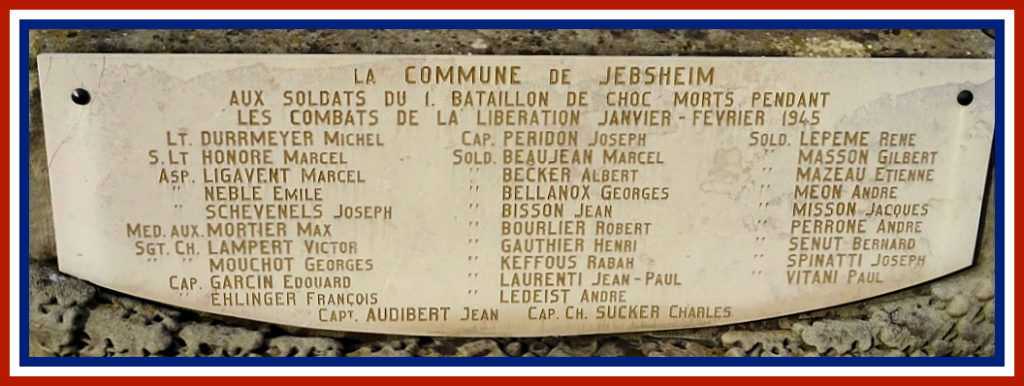
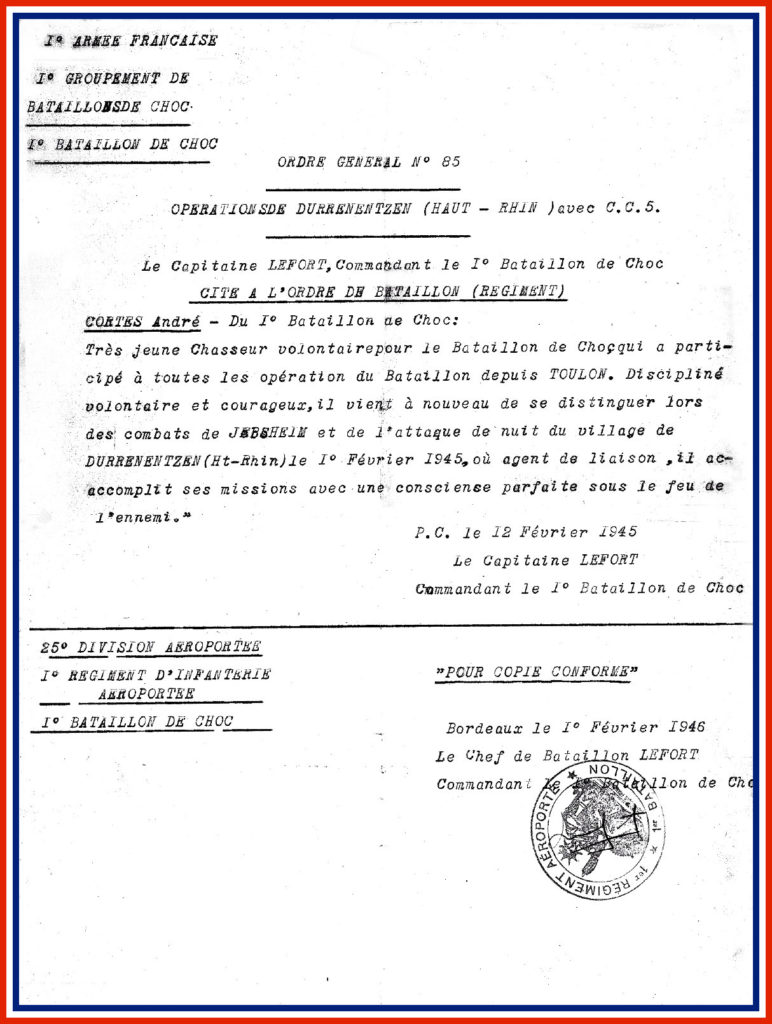
…en mars 1945…
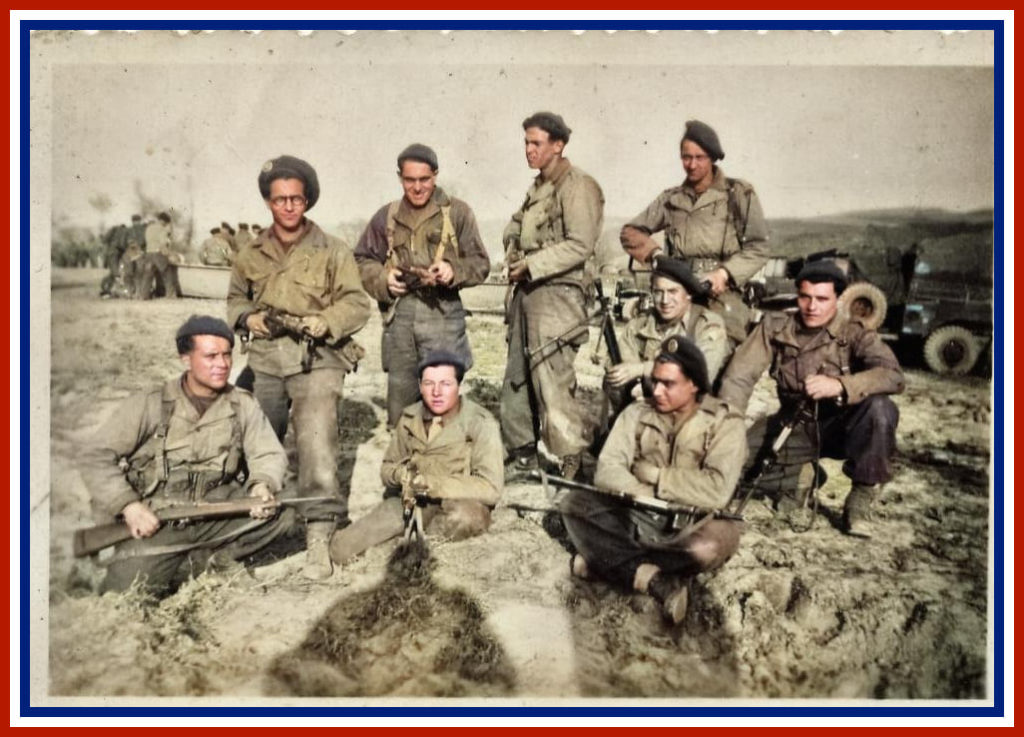
During the German campaign, he ended the war on May 8, 1945 at the Arlberg Pass in Austria, 8 days after being promoted to corporal.
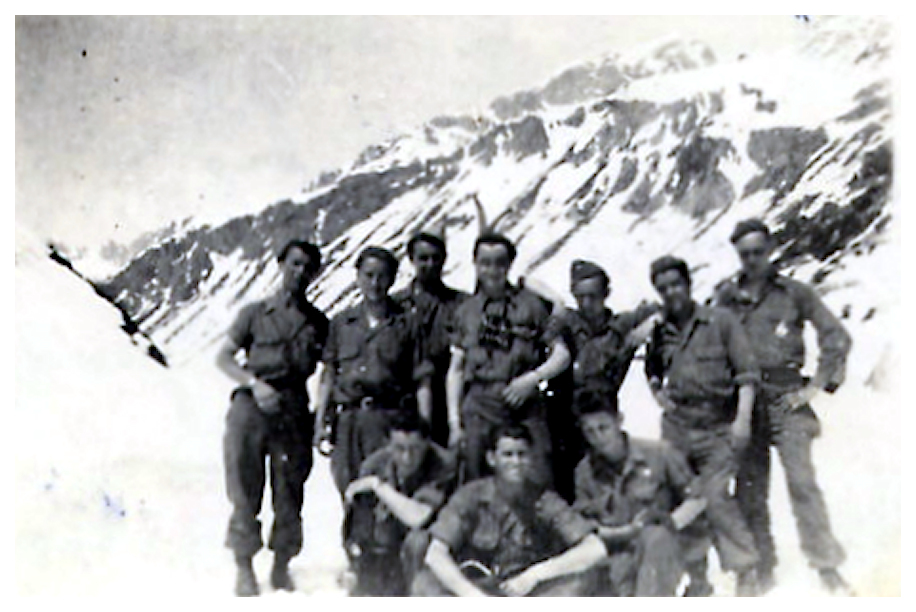
He was awarded the Croix de Guerre 1939-1945 with 2 commendations, and the médaille des blessés.
Appointed sergeant on February 1, 1946, he volunteered for the Indochina war, leaving the battalion recently established at the La Palu camp near Bordeaux and transferring to the 1st S.A.S. Far East Shock Battalion, with which he landed in Saigon on February 23, 1946.
He took part in the fighting in Laos, with 2 operational jumps over Vientiane and Luang-Prabang, earning him his parachutist brevet n°10156 on May 9, 1946 (6 jumps were required to obtain it).
In 1947, he suffered from keratitis in one eye, which led to his being declared unfit for combat and transferred to the colonial parachute staff.
Repatriated to France on May 11, 1948, he left the army for good on February 1, 1949.
An avid reader of literature, particularly Edmond Rostand’s “Cyrano de Bergerac”, he found a job at the Café de la Paix, a stone’s throw from the Opéra, where he was an assiduous spectator.
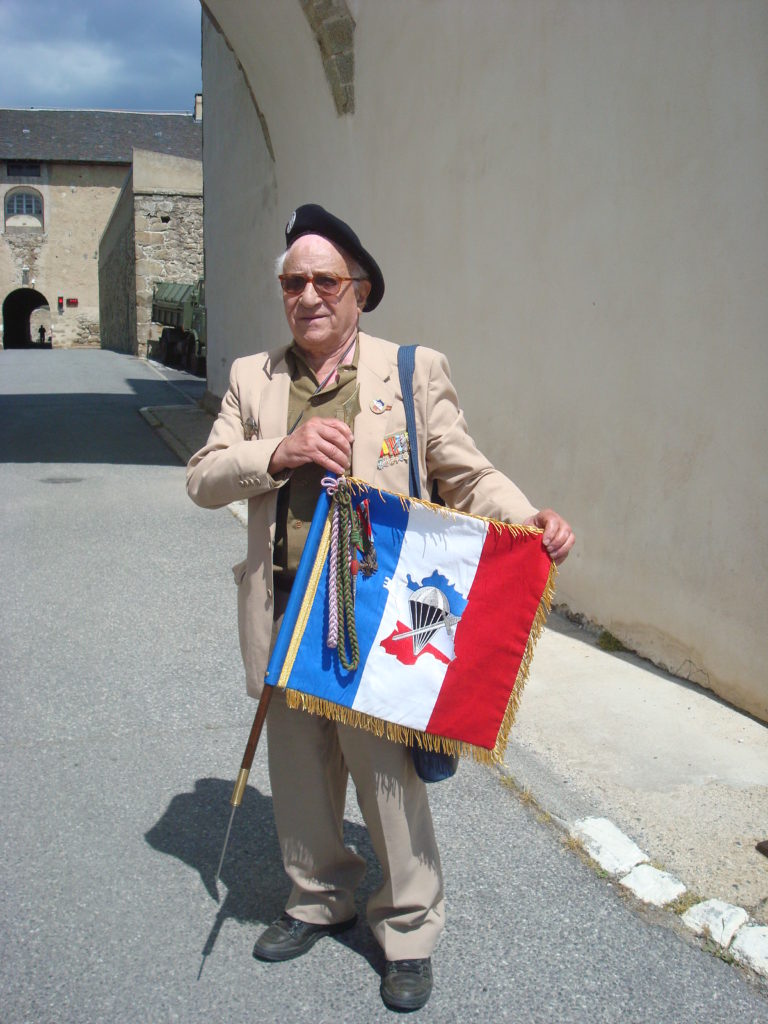
A trade unionist committed to serving others, he also devoted his life to honoring and perpetuating the memory of his comrades in the Bataillon de Choc, in the places where they fought their last battles: Toulon, Servance, Belfort, Masevaux, Col du Hundsruck, Jebsheim…
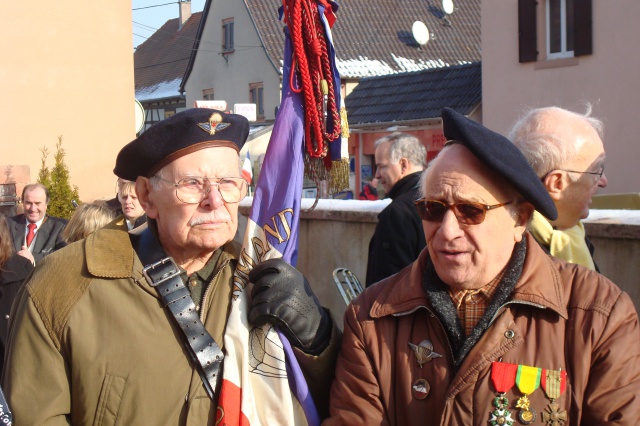
On September 20, 2019, at Hill 820, for the 75th anniversary of the battle in which so many of his comrades and friends fell, he seemed unusually “withdrawn” in his thoughts…no doubt he knew that it might be the penultimate time he came to this place…
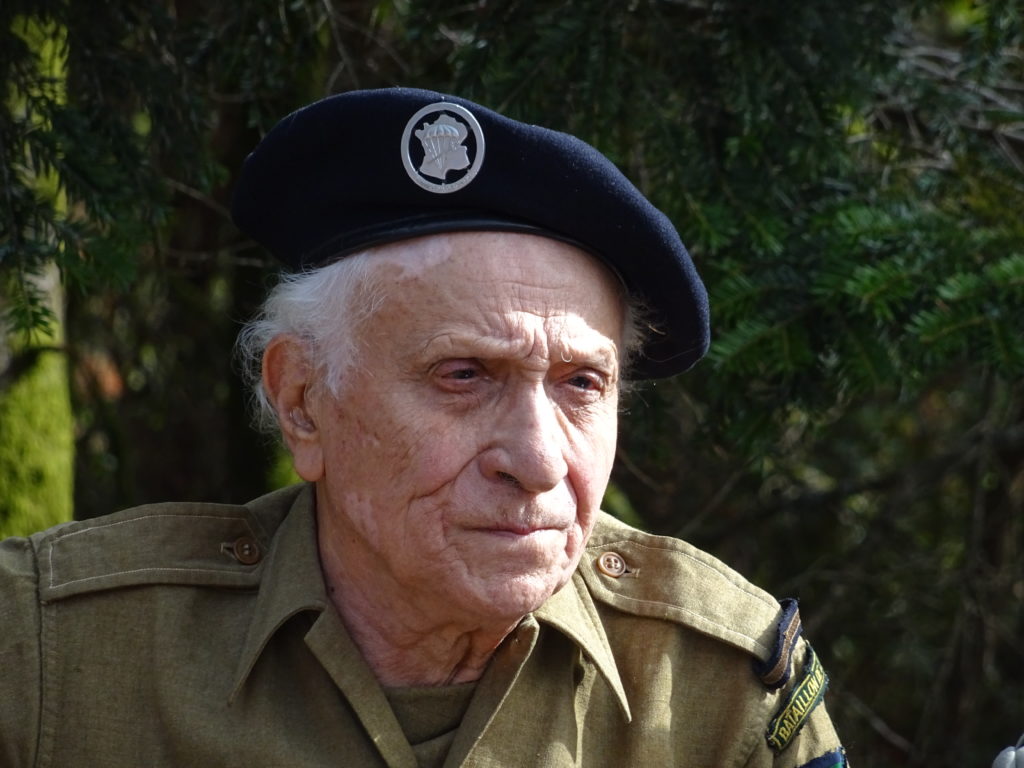
André Cortès died suddenly on December 19, 2019, at the age of 92, while still planning to attend the Jebsheim ceremonies in early 2020.
Representatives of the Amicale du Bataillon de Choc, the SMLH and Bagherra were present at his funeral at Père Lachaise to pay their last respects.
In accordance with his last wishes, for his final journey, his ashes were scattered on the battlefield of côte 820, where he rests in peace alongside his comrades.
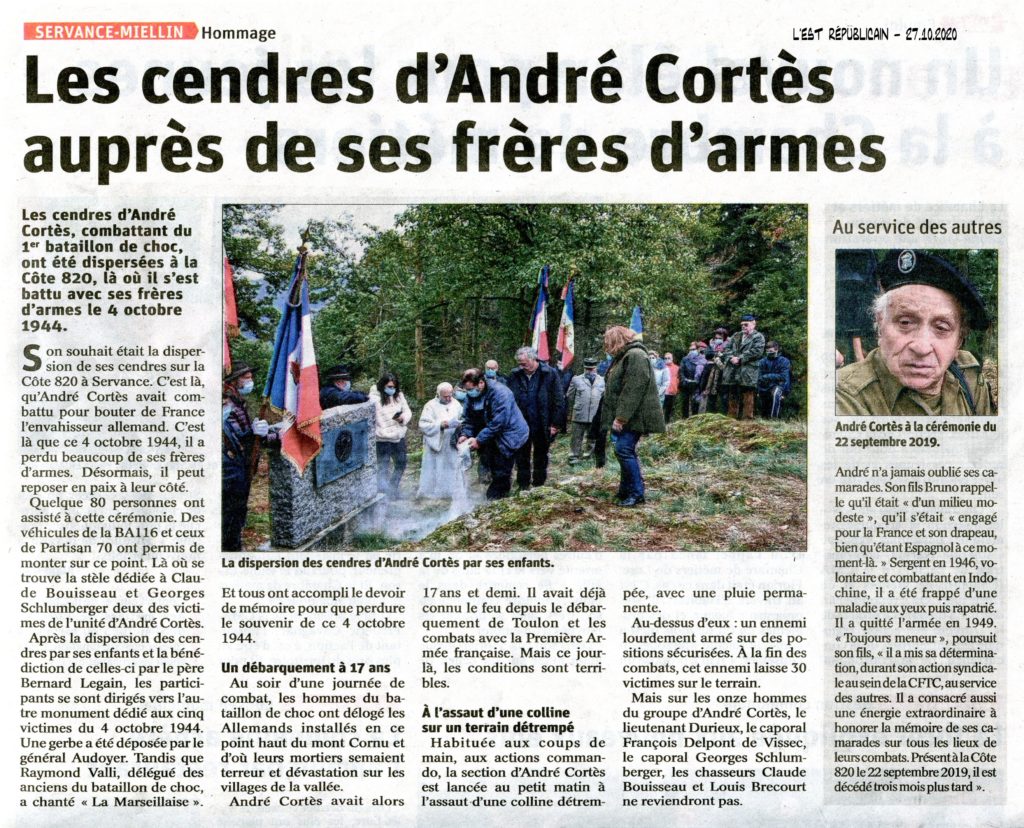
In leaving us, he enters definitively into the legend of the Bataillon de Choc and joins his valiant comrades for eternity.
Dear André, we won’t forget you!
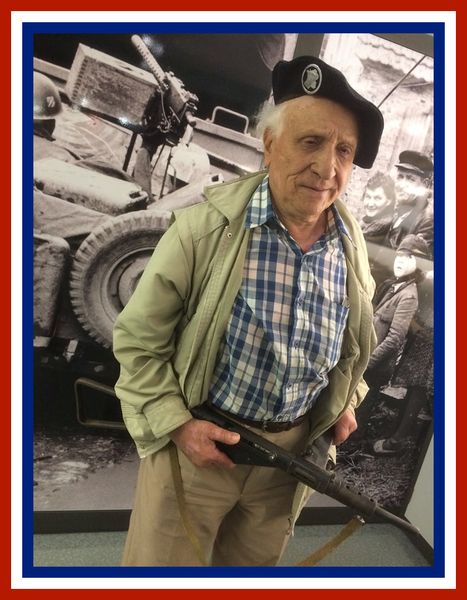
We would like to thank Henri Simorre, a fan of the Bataillon de Choc, for the information and photos he provided for the writing and illustration of this portrait.

If you’re interested in the history of the Bataillon de Choc : https://1erbataillondechoc.forumactif.com/
Robert DUCLOS 1918 – 2004
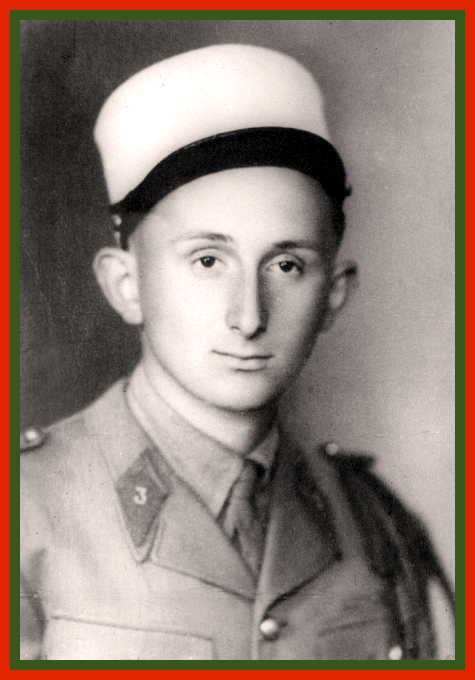
“Legio Patria Nostra”…”En pointe toujours”
Robert Lucien Roger DUCLOS was born on August 26, 1922 in LIEUREY in the EURE department.
On October 4, 1941, he enlisted voluntarily in the Foreign Legion for a period of 5 years.
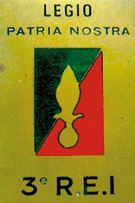
Robert Duclos was assigned to the 3rd Foreign Infantry Regiment (3rd R.E.I.), which he joined on December 28, 1941, and with which he fought in North Africa.
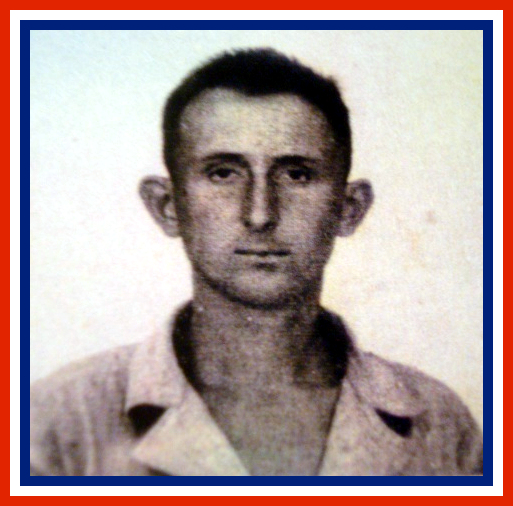
Le 28 juin 1943 il arrive au Bataillon de Choc à la 3ème Compagnie.
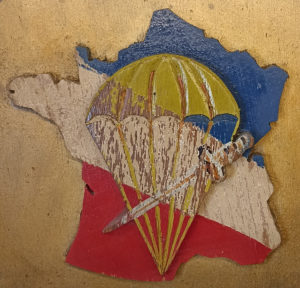
He was one of the first to land in Corsica with the “Casabianca” submarine, and took part in the liberation battles on the island of beauty.
At the end of December 1943, with Lieutenant Jacobsen’s section, he took part in a raid on Talamone in Italy, with the aim of reconnoitring the maquis and blowing up a railway line.
The speedboats carrying the ten or so men of the Shock Battalion “stumbled” on a German patrol boat, which fortunately fled, but the bad weather forced them to turn back (on the 22nd) and abandon the operation. A new attempt was made on December 28, this time crowned with success. The commando returned safely to Batia on the 29th.
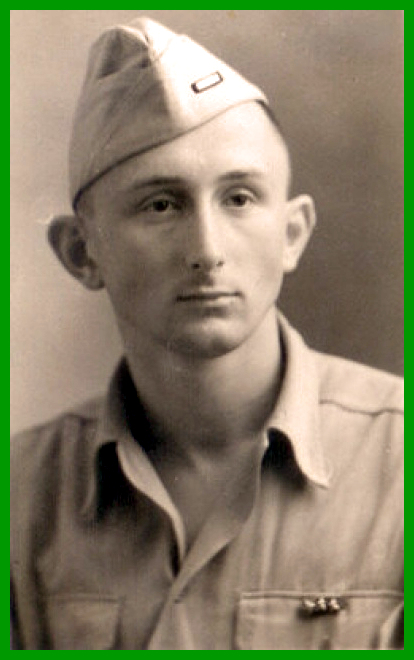
Robert Duclos joined the “student-aspirants” school in Cherchell (Algeria) on April 27, 1944.
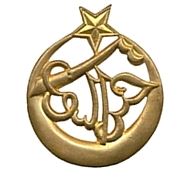
On graduating, he was appointed aspirant de réserve and joined the IIIrd Battalion of the 3rd Regiment of Algerian Tirailleurs (3rd RTA), with whom he fought in France.
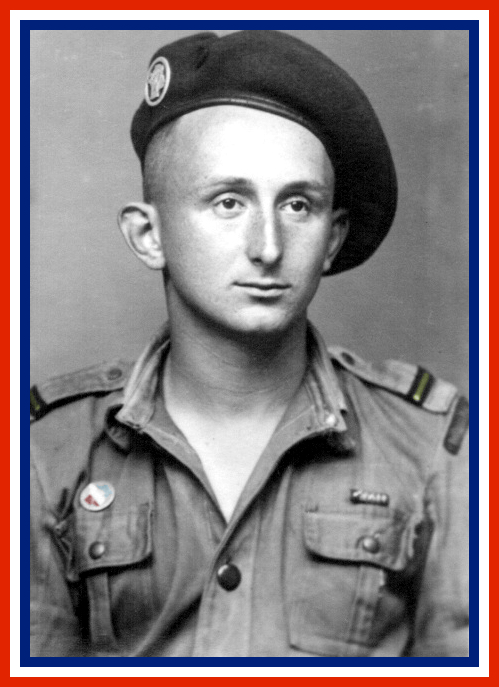
At his request, during the Alsace campaign he joined the Bataillon de Choc on January 14, 1945.
He took part in the difficult battles to liberate Jebsheim (68) and Durrenentzen (68).
After the fighting in the Colmar pocket, he took part in the German campaign, which ended in Austria with the entire Bataillon de Choc.
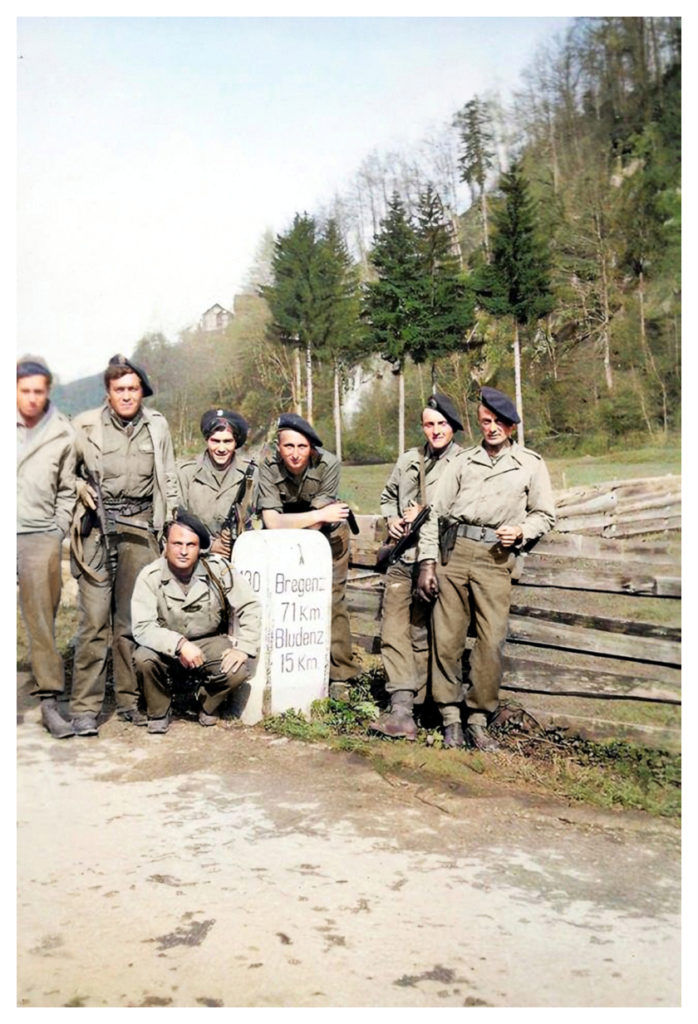
He was promoted to active second lieutenant on June 26, 1945.
He left the Battalion on January 28, 1946, to join the 3rd Foreign Infantry Regiment, bringing his career full circle.
He died at the age of 82 on May 21, 2004 in Marseille (13), not far from the Légion Etrangère’s headquarters in Aubagne since 1962.
Once a Legionnaire, always a Legionnaire!
We would like to thank Henri Simorre, a specialist in the Bataillon de Choc, for the information and photos he provided for this portrait
If you’re interested in the history of the Bataillon de Choc : https://1erbataillondechoc.forumactif.com/
Roger Maurice FOURNIER 1920 – 2017
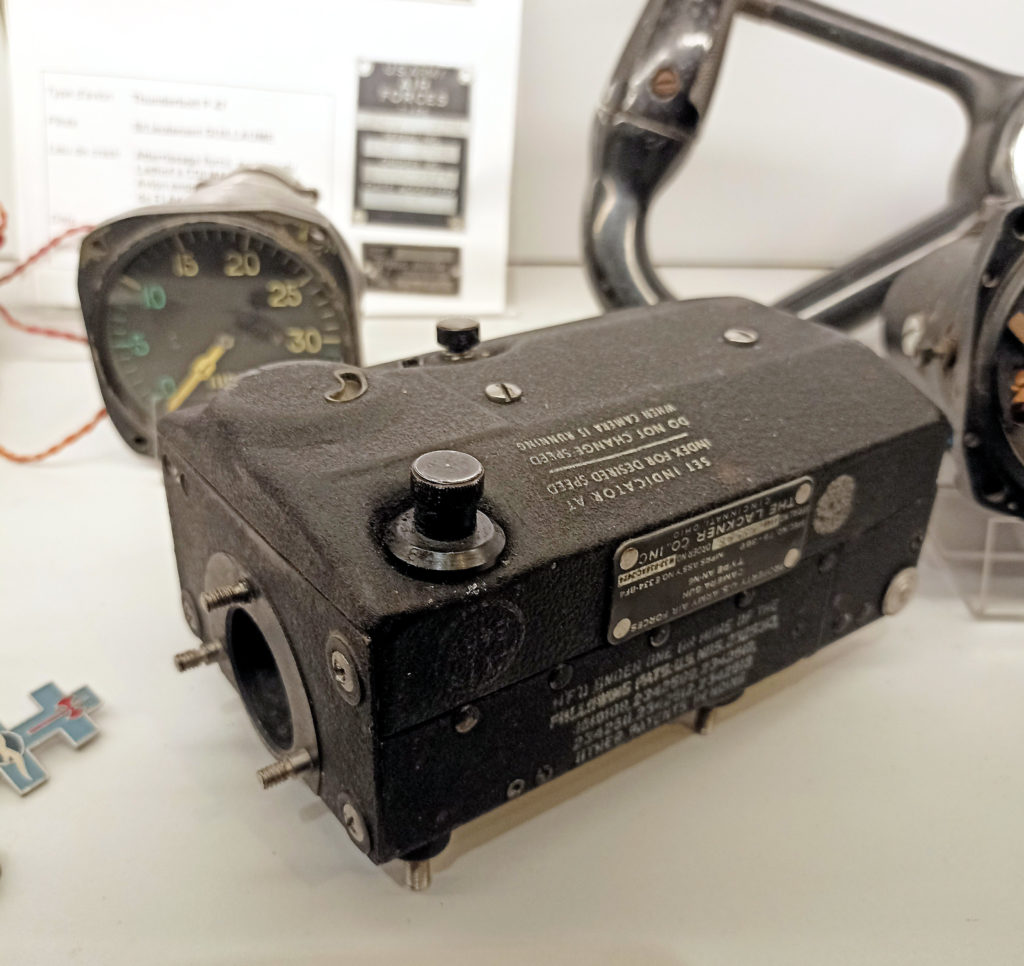
AN-N6 type Gun Camera manufactured in 1944 by THE LACKNER CO. INC. of Cincinnati, Ohio. Its 35 mm f/3.5 lens is missing from the front.
It was the standard camera used by the US Air Force during World War II, and was used on fighter aircraft such as the P-51, P-47 and P-38 to record and confirm impacts during air-to-air and air-to-ground firing. The camera only functioned when the aircraft’s gun release button was pressed by the pilot.
The gun camera in front of you was installed on the P-47 Thunderbolt fighter-bombers of the GC I/4 Navarre fighter group, where Roger Fournier was a weapons mechanic, and which he brought back as a souvenir at the end of the war.
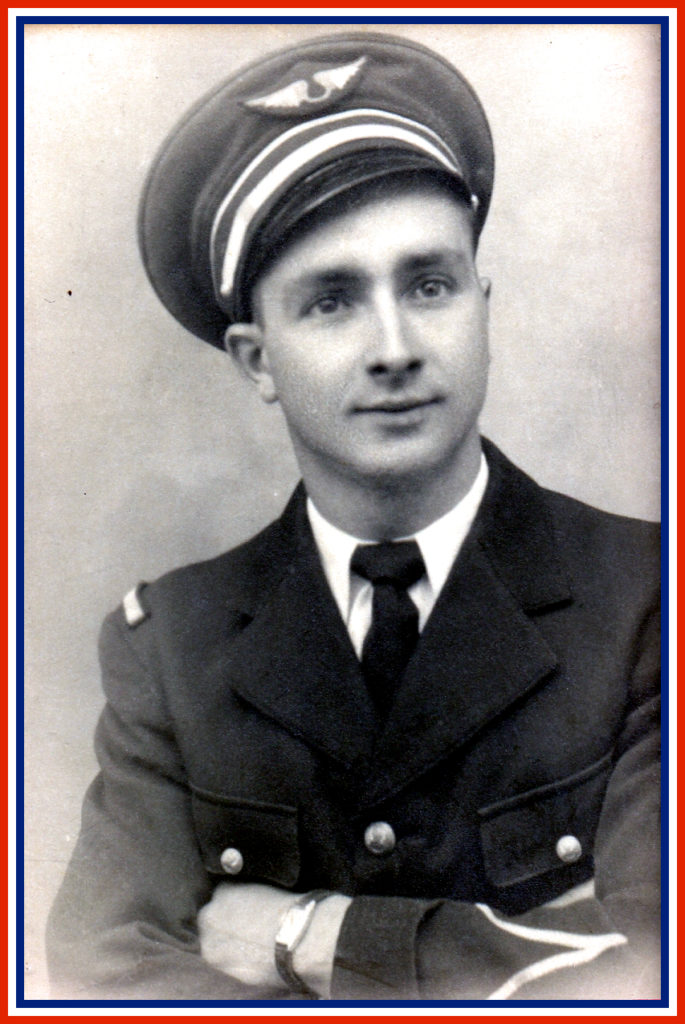
Tribute to Roger Fournier:
Born December 5, 1920 in Angers into a family of three children. After passing his brevet, he voluntarily enlisted for 3 years on November 29, 1938 at the military commissariat in Périgueux for the Bataillon de l’air 127, not even 18 years old. Appointed corporal on May 16, 1939, he was transferred to Air Battalion 124 on November 6, 1939, via Rennes, the Saint-Jean d’Angely Air Base (BA) from May 1, 1940, and the Bergerac BA on September 1, 1940. He signed up for 1 year on 11/25/1941, then a further 2 years on 9/30/1942 at the Limoges Air Base Commissariat. He was appointed sergeant on 14/4/1942. Posted to Toulouse-Francazal on 10/1/1942, he was directed to Marseille on 10/19/1942, boarded there on the 22nd, and arrived in Dakar (AOF) on 11/13/1942, where he was assigned to Groupe de Chasse (GC) II/6 on 11/14/1942.
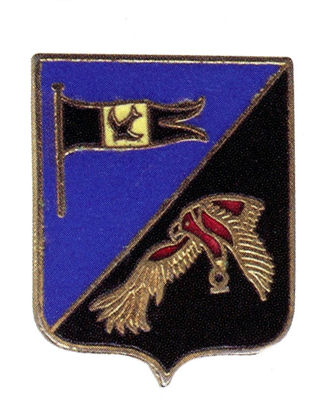
He transferred to the Groupe de Chasse I/4 Navarre on 12/20/1942, where he remained until the end of the war. He moved with his unit to North Africa, embarking at Dakar, landing at Casablanca in Morocco on 6/14/1943, crossing the border into Tunisia on 9/5/1943, then Algeria on 10/25/1943. He arrived in Corsica with his group on 7/22/1944.
Embarked by plane in Corsica on 4/9/1944, he moved to the Ambérieu base the same day. He was appointed Staff Sergeant on 11/27/1944 and extended his contract for the duration of the war.
He remained in the Air Force and took part in the occupation of Germany until December 1948, when he decided to return to civilian life.
He returned to the restaurant business for 25 years, managing establishments in Marlenheim and Artzenheim.
In 1991, he married his second wife, Marlyse Rémond, in Niederhergheim, where he had lived since 1977. He was an avid soccer and rugby fan.
Roger Fournier died on June 29, 2017 at the age of 96.
He held the French Commemorative Medal for the 1939-1945 War with bars: AFRICA – MEDITERRANEAN – LIBERATION – GERMANY.
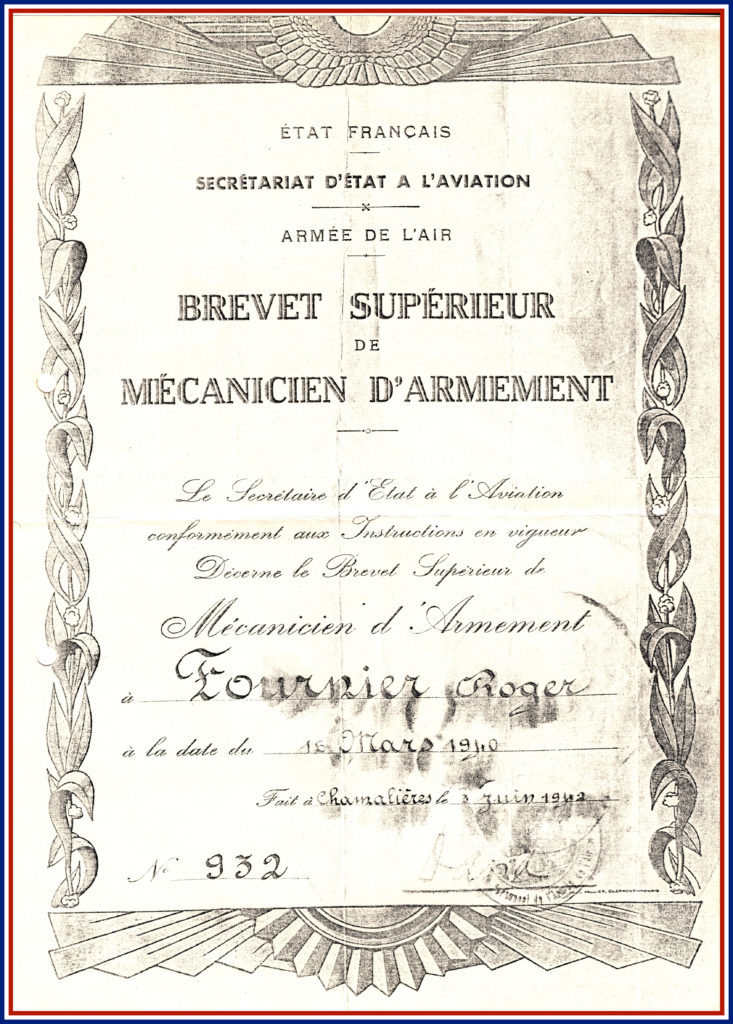
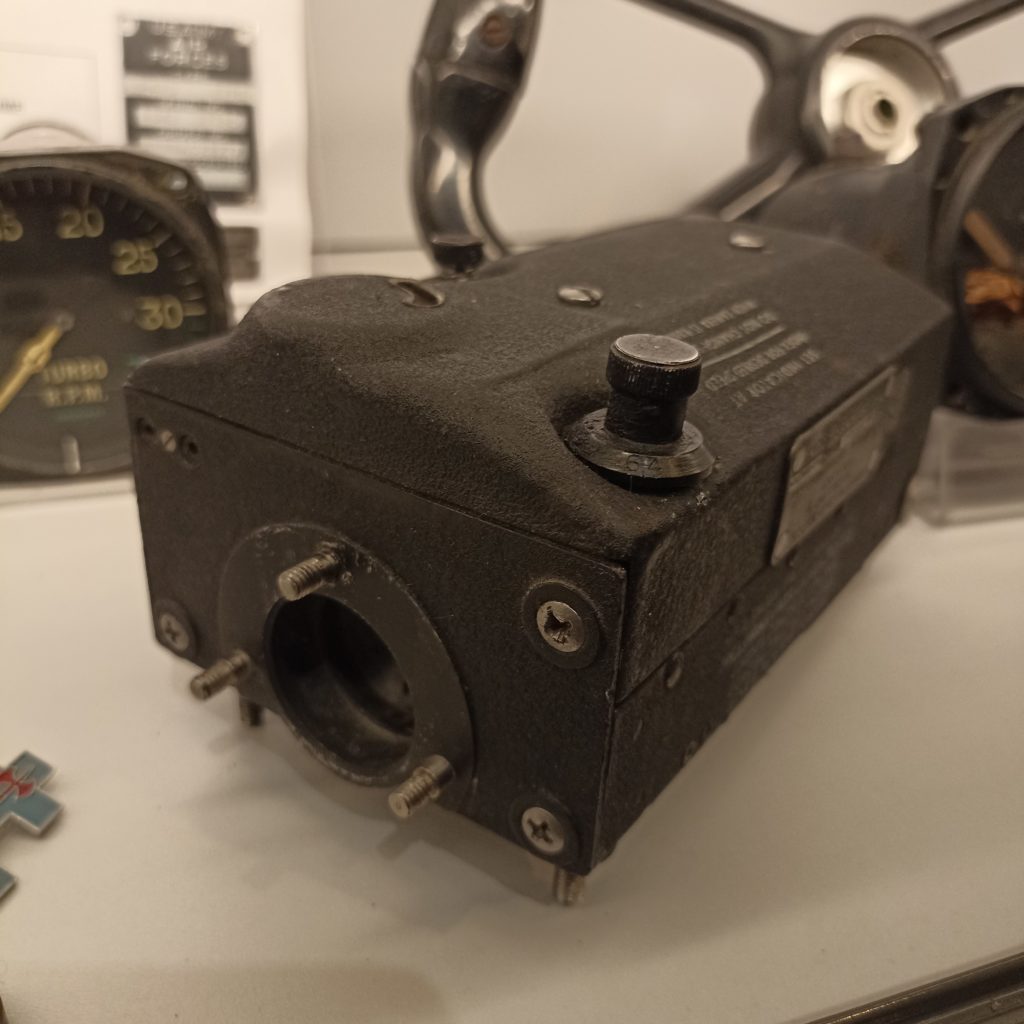

Tank destroyer M10 “Eylau”, 11ème RCA.
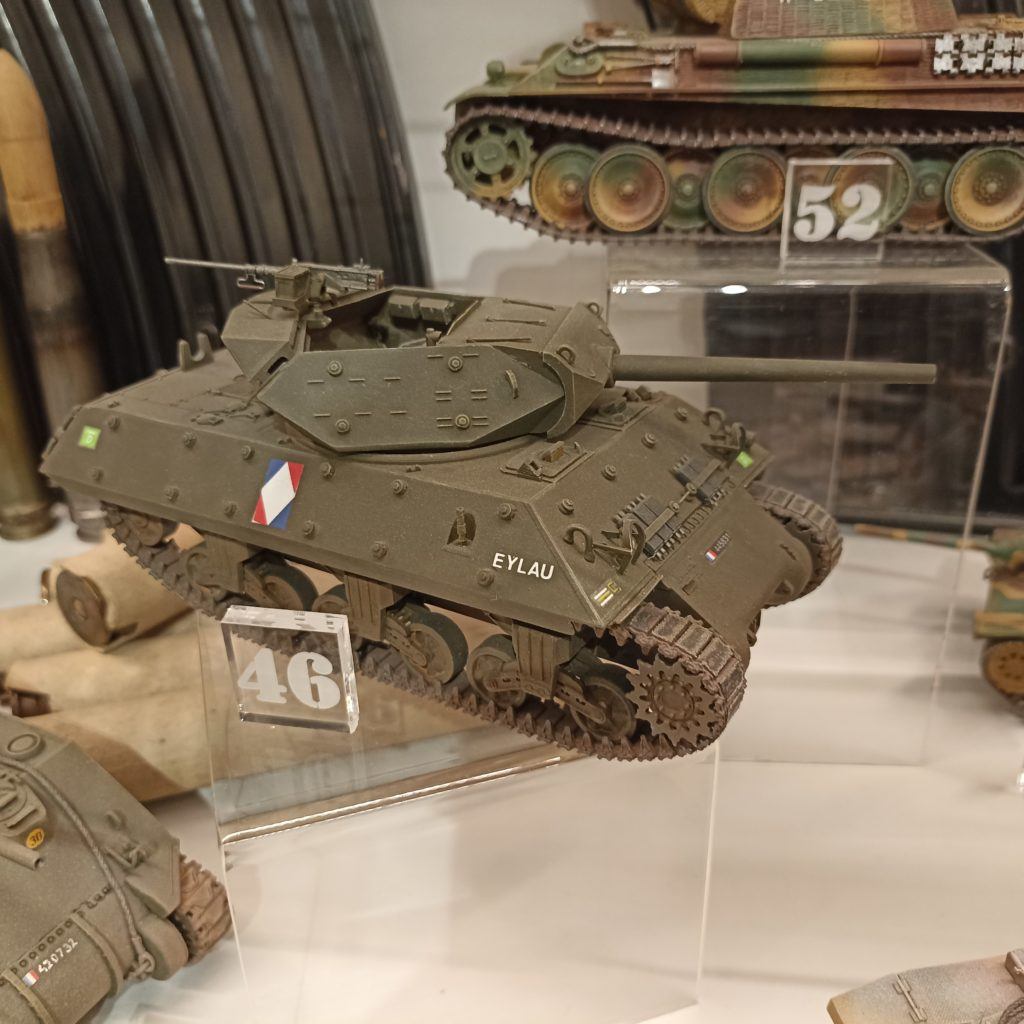
French M10 tank destroyer “Eylau”, from the 2nd squadron of the 11th Régiment de Chasseurs d’Afrique (11th RCA), destroyed at 4:15pm on December 17, 1944 at KIENTZHEIM (68) by a German Panzer V “Panther” tank which set it on fire.
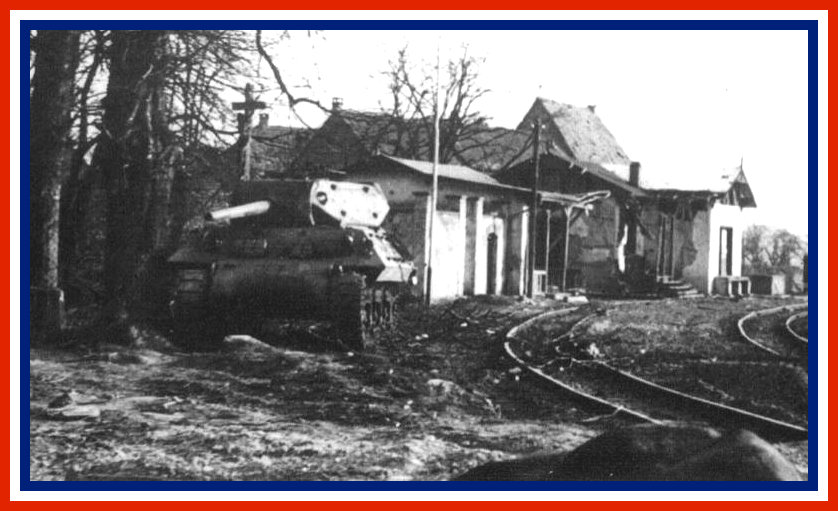
Maréchal des Logis COLLIN and Chasseur MARTINEZ are killed, while chasseur DESTREMONT is wounded in the legs.
Crew:
Tank commander: Maréchal des Logis chef JUNG Joseph
Gunner: COLLIN Albert
Pilot: DESTREMONT André
Assistant pilot: MARTINEZ André
Radio loader: MARTINI Georges
The M10 was a tank hunter armed with a 76.2mm M7 cannon (54 shells) and a 50-caliber Browning machine gun (12.7mm-1300 rounds).
Key features:
6406 units produced.
Crew of 5 (tank commander, pilot, co-pilot, gunner, loader).
Length 6.83 m (with gun) or 5.97 m (without gun).
Width 3.05m and height 2.57m.
Weight: 30 tonnes.
source : http://www.chars-francais.net/2015/index.php/classement-individuel/m10-tank-destroyer?task=view&id=1140 – internet.
